






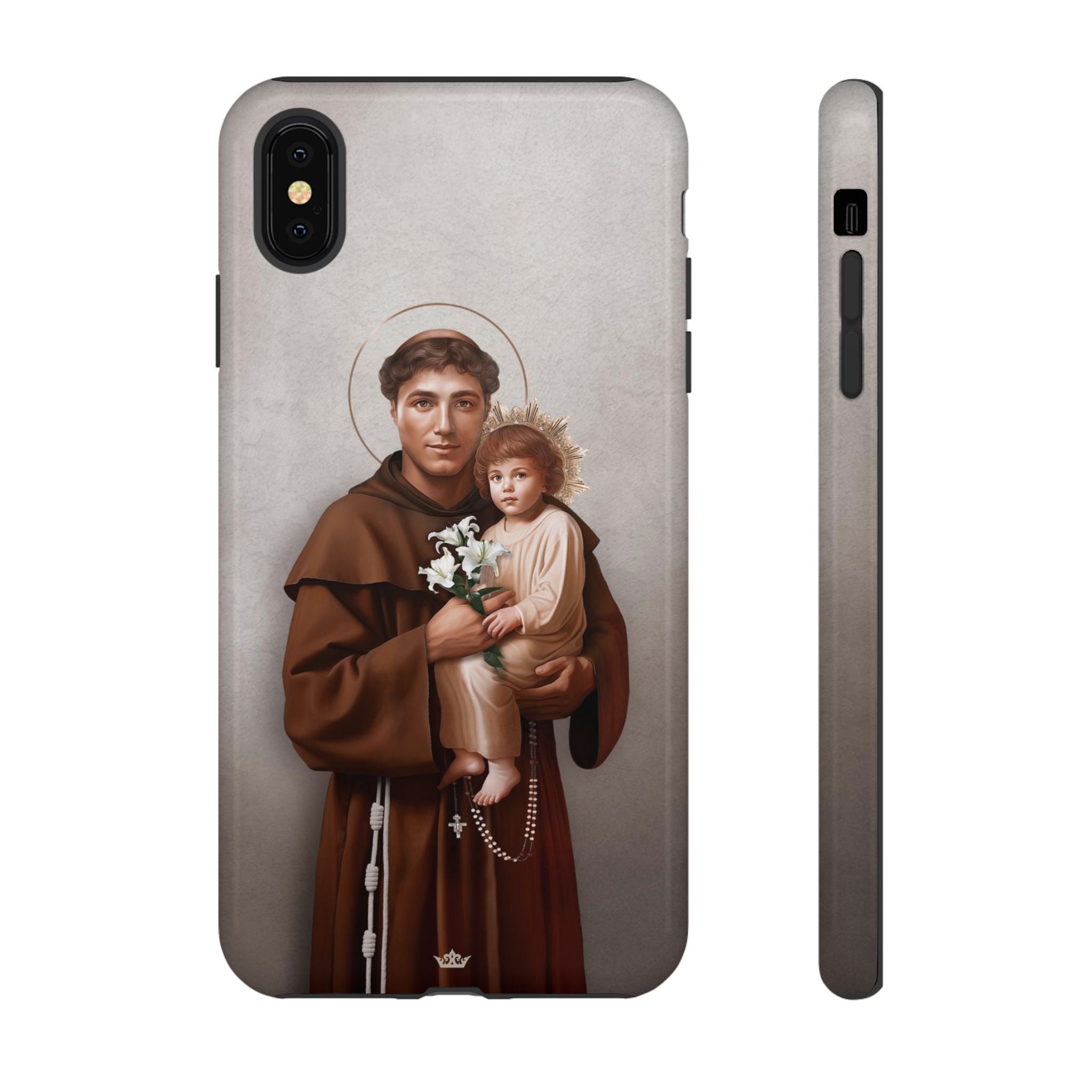
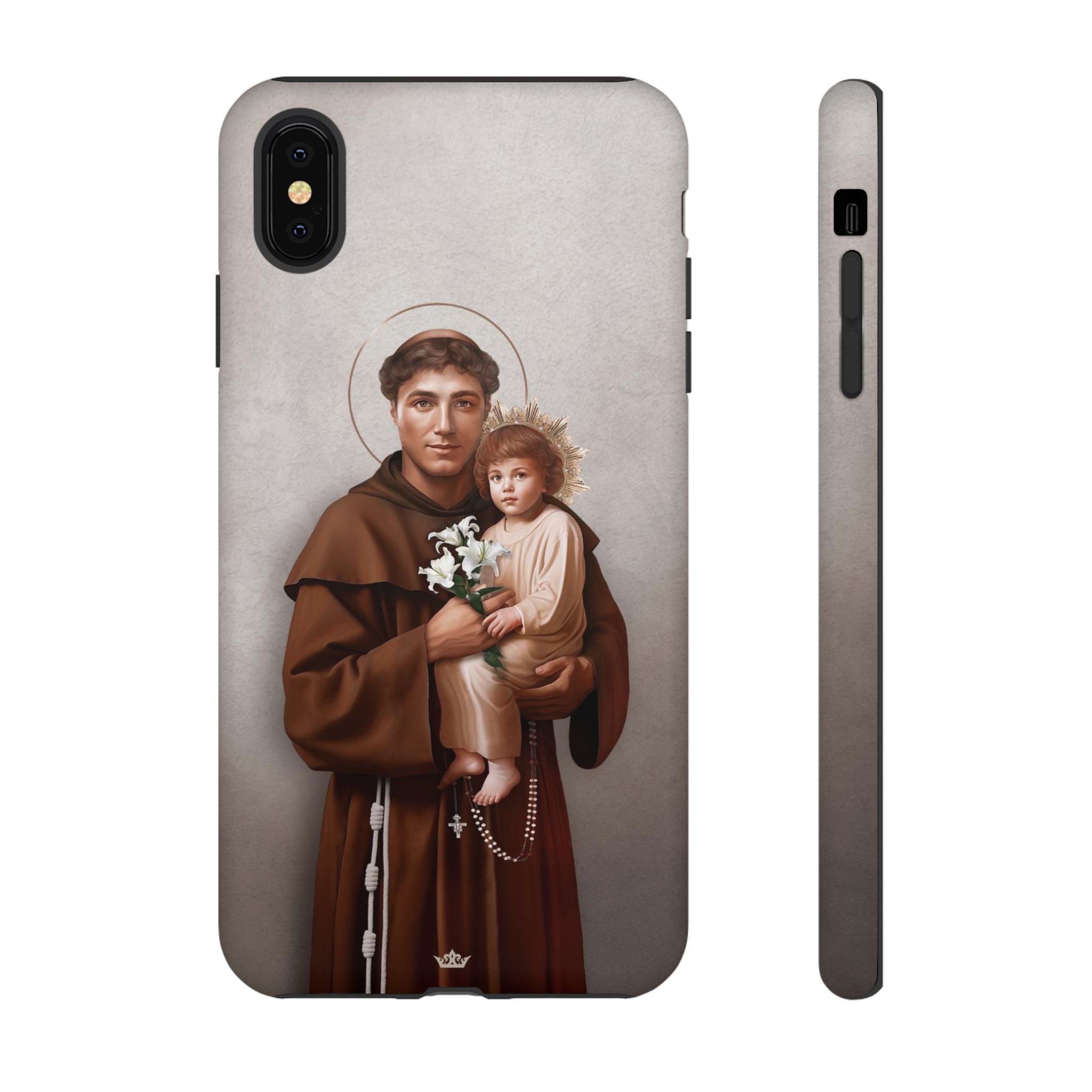






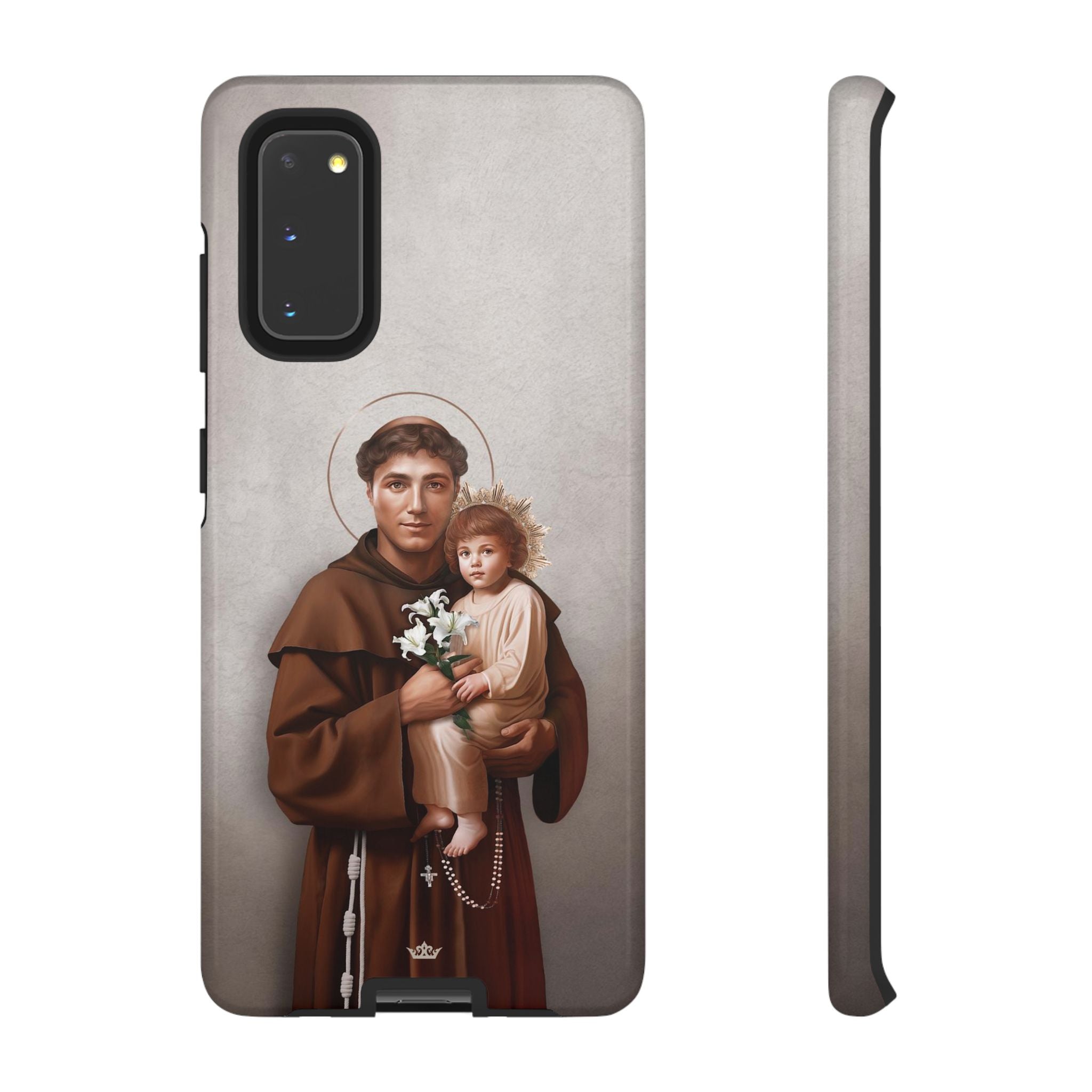
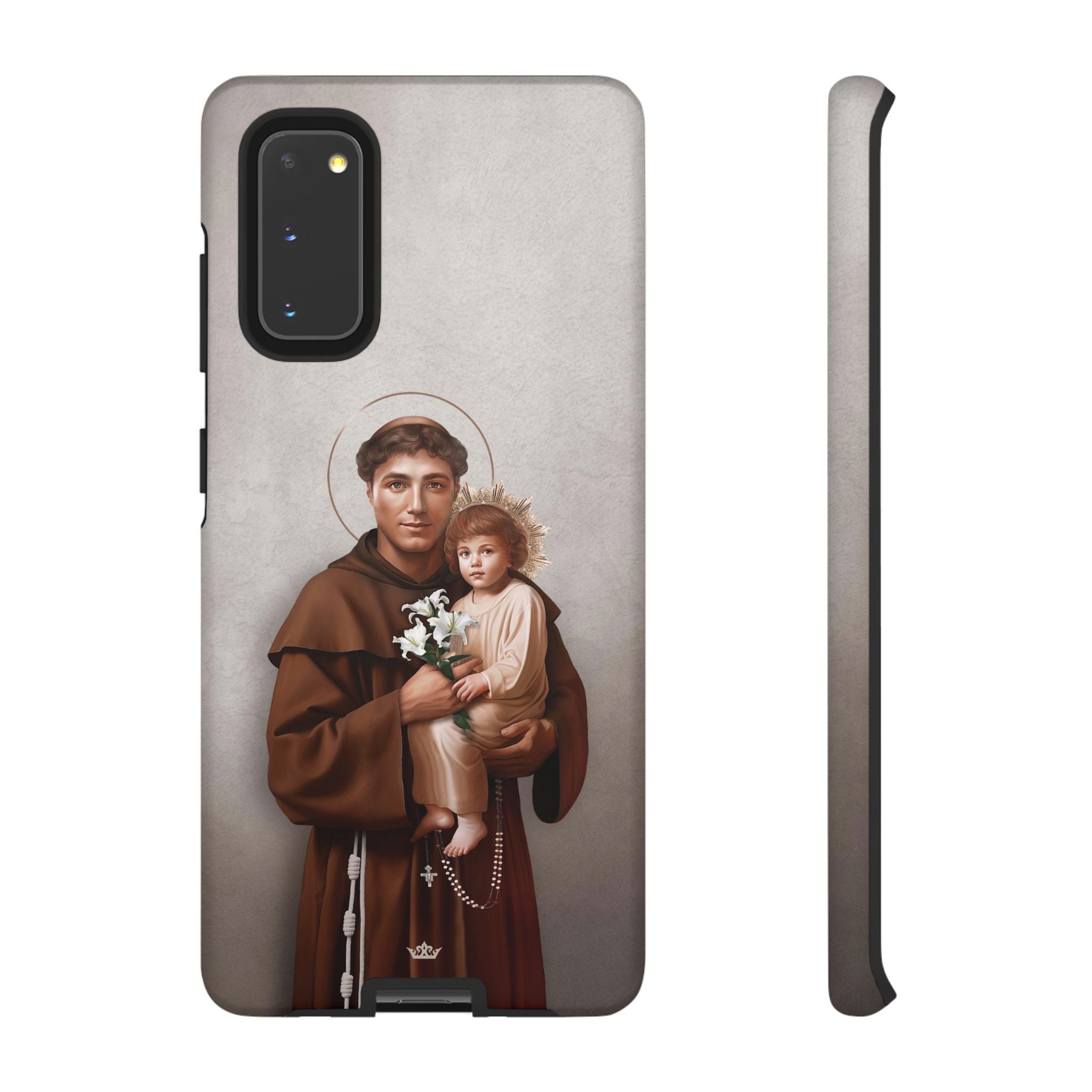
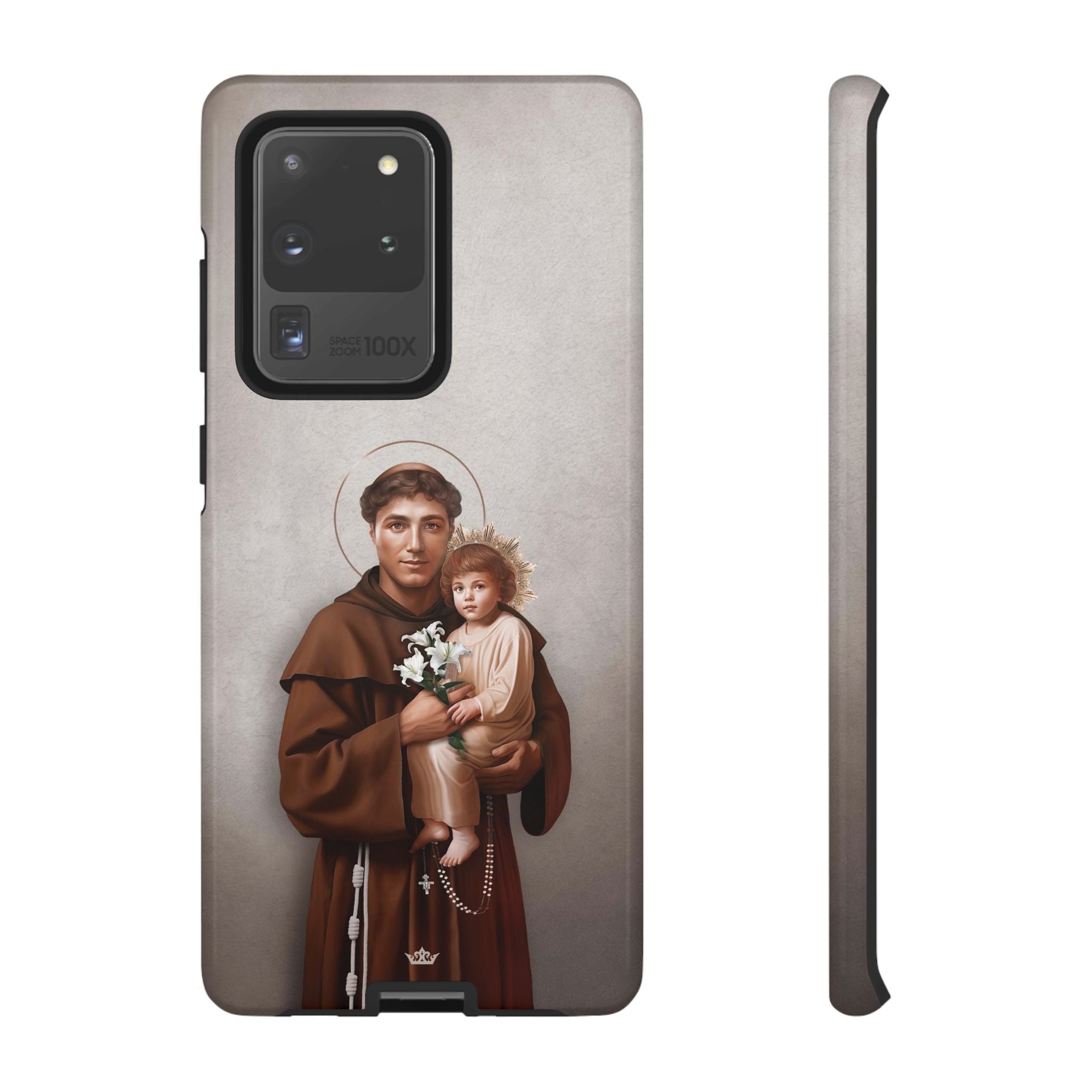
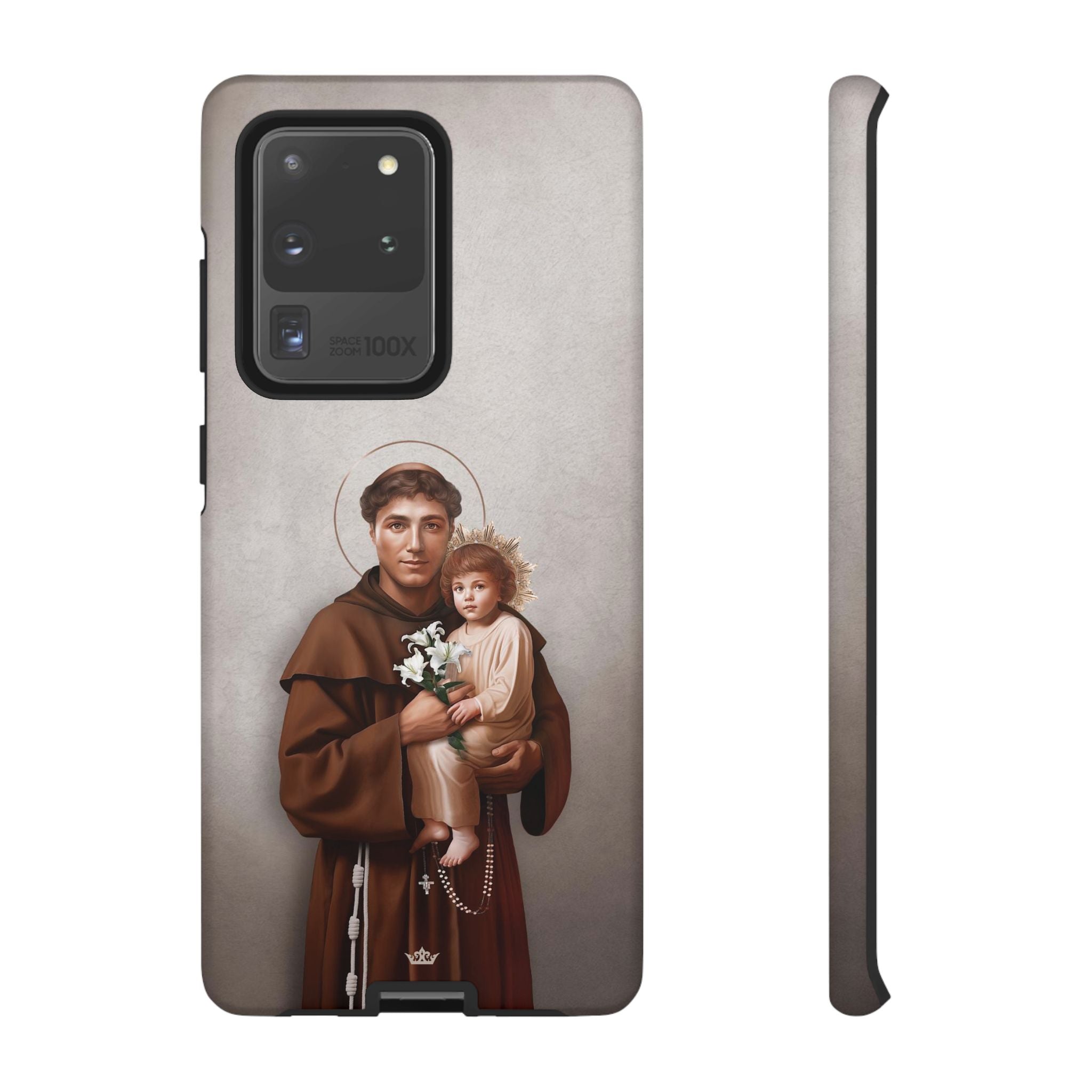
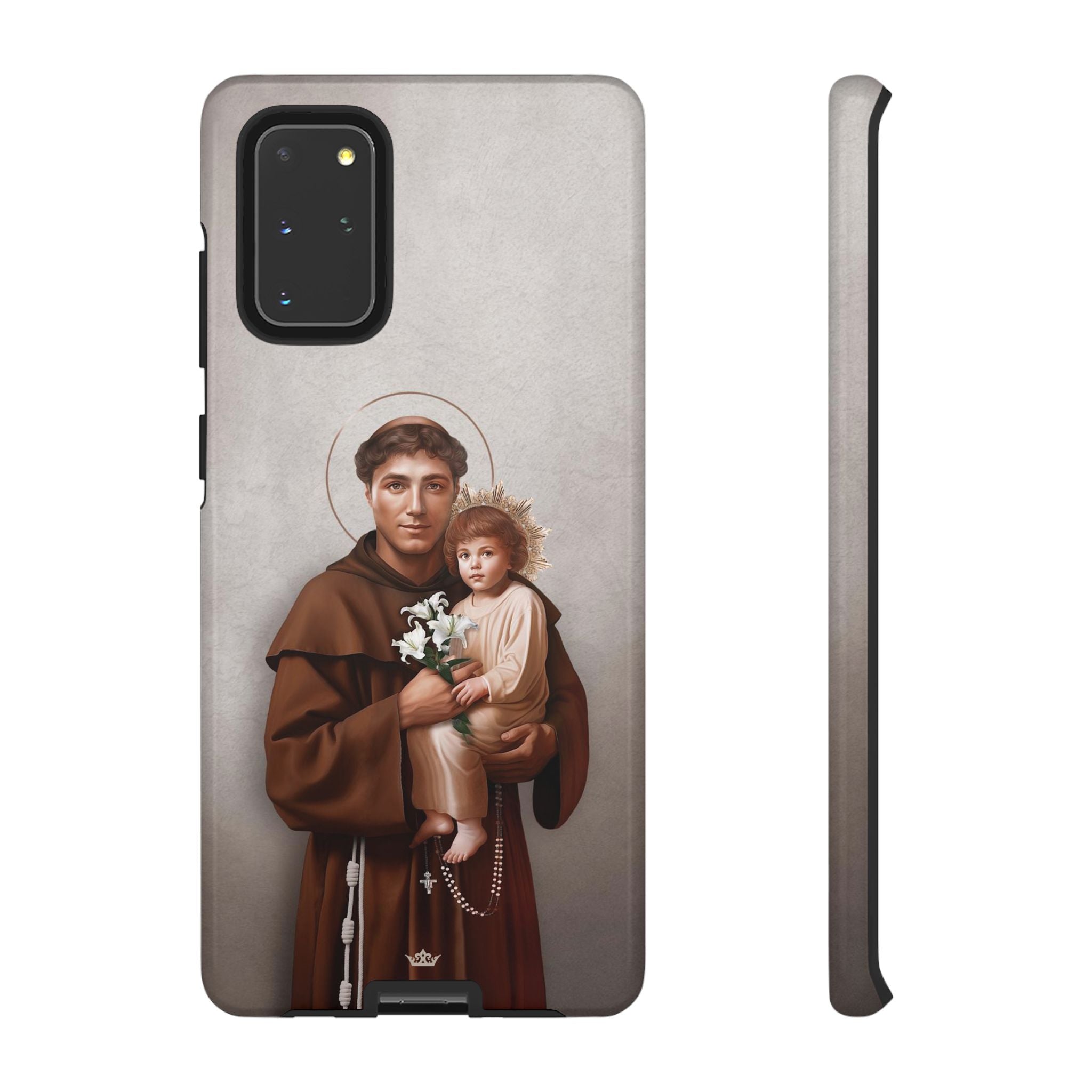
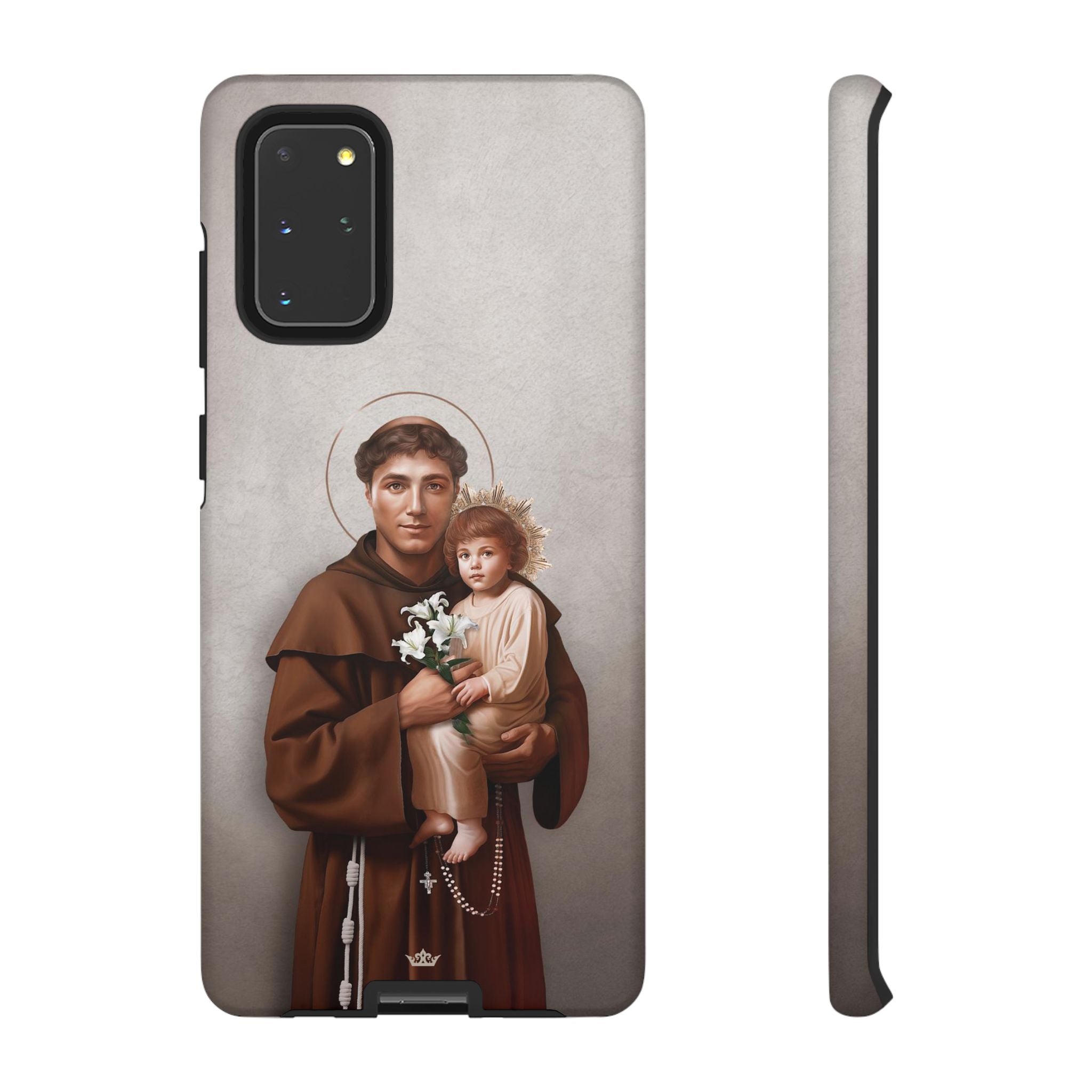
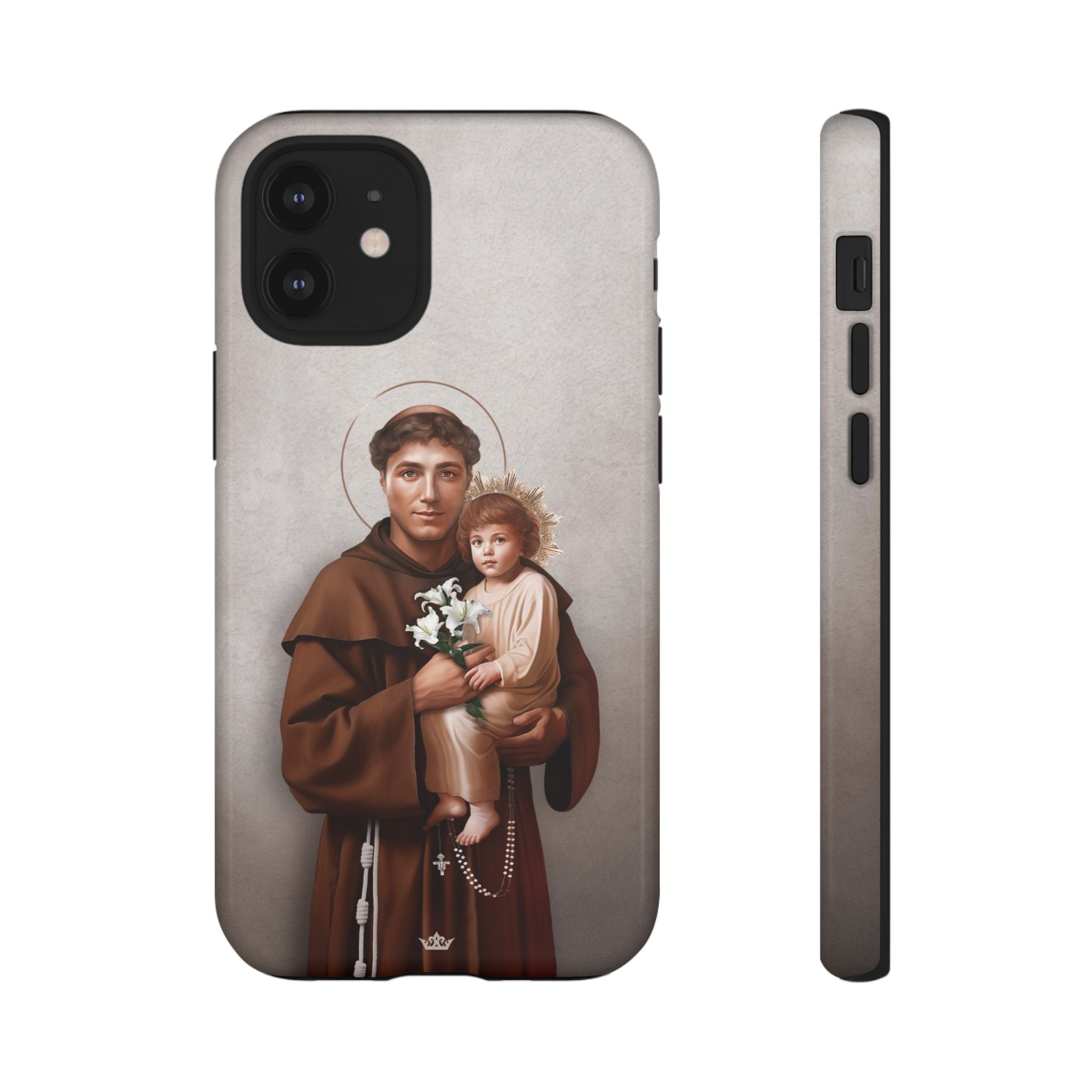
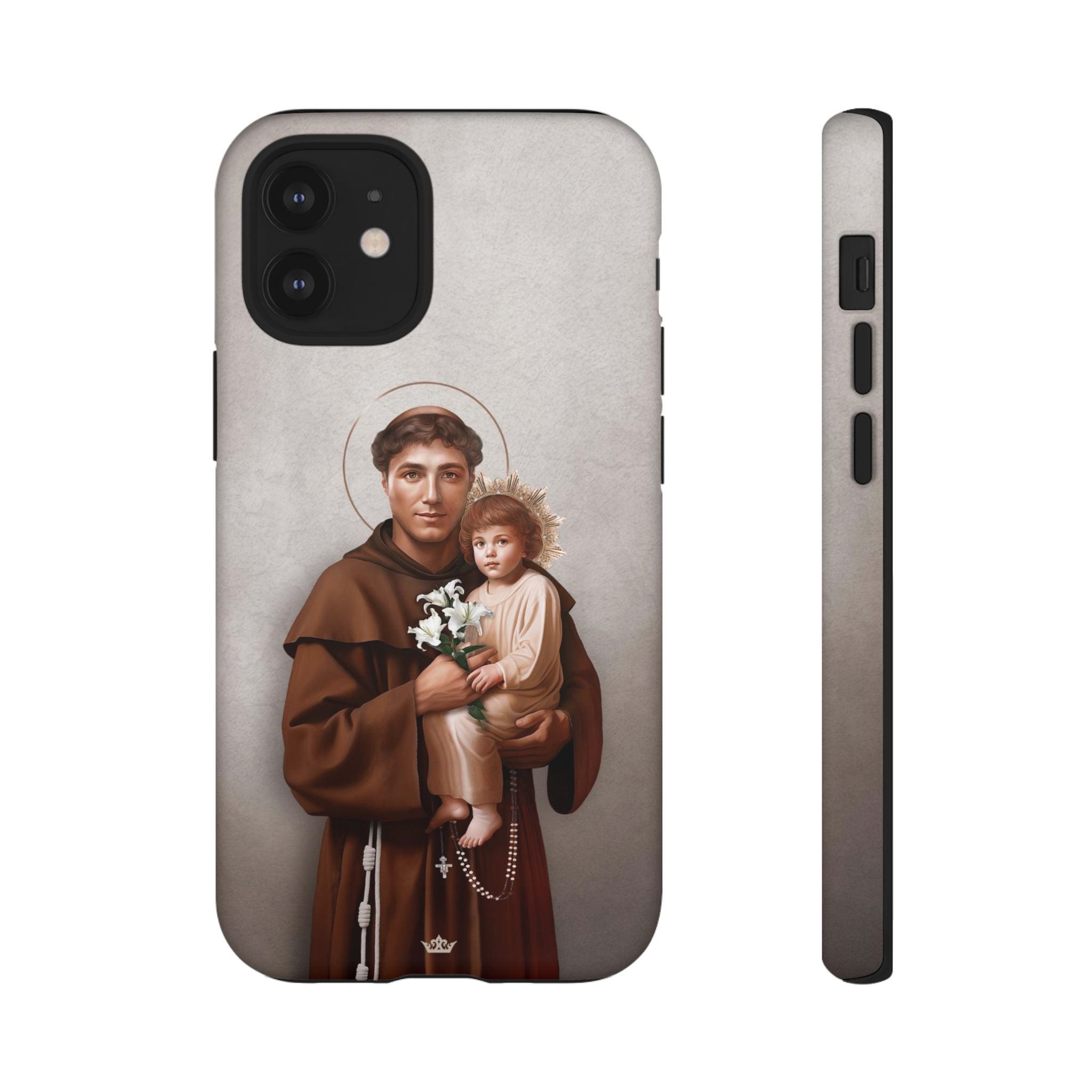
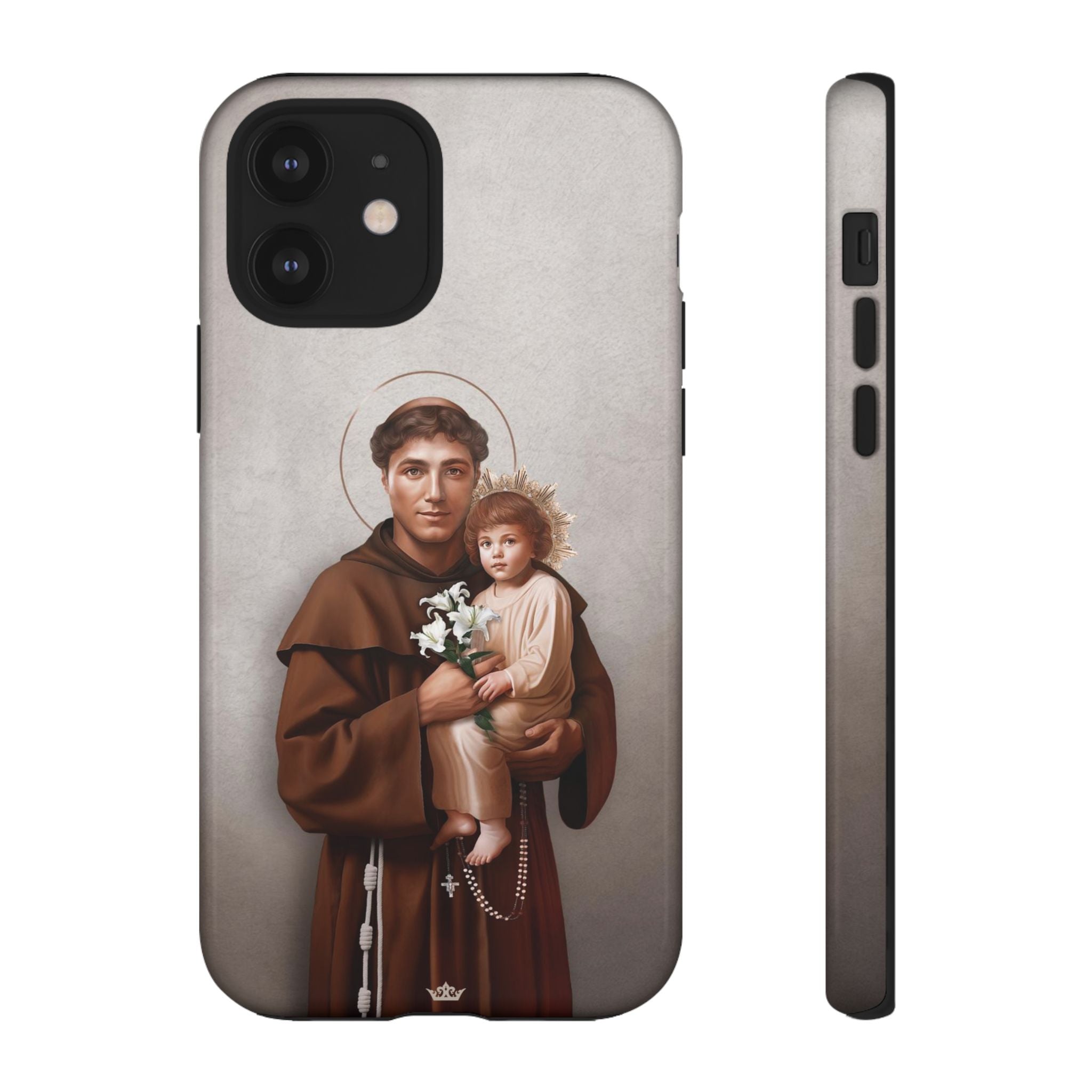
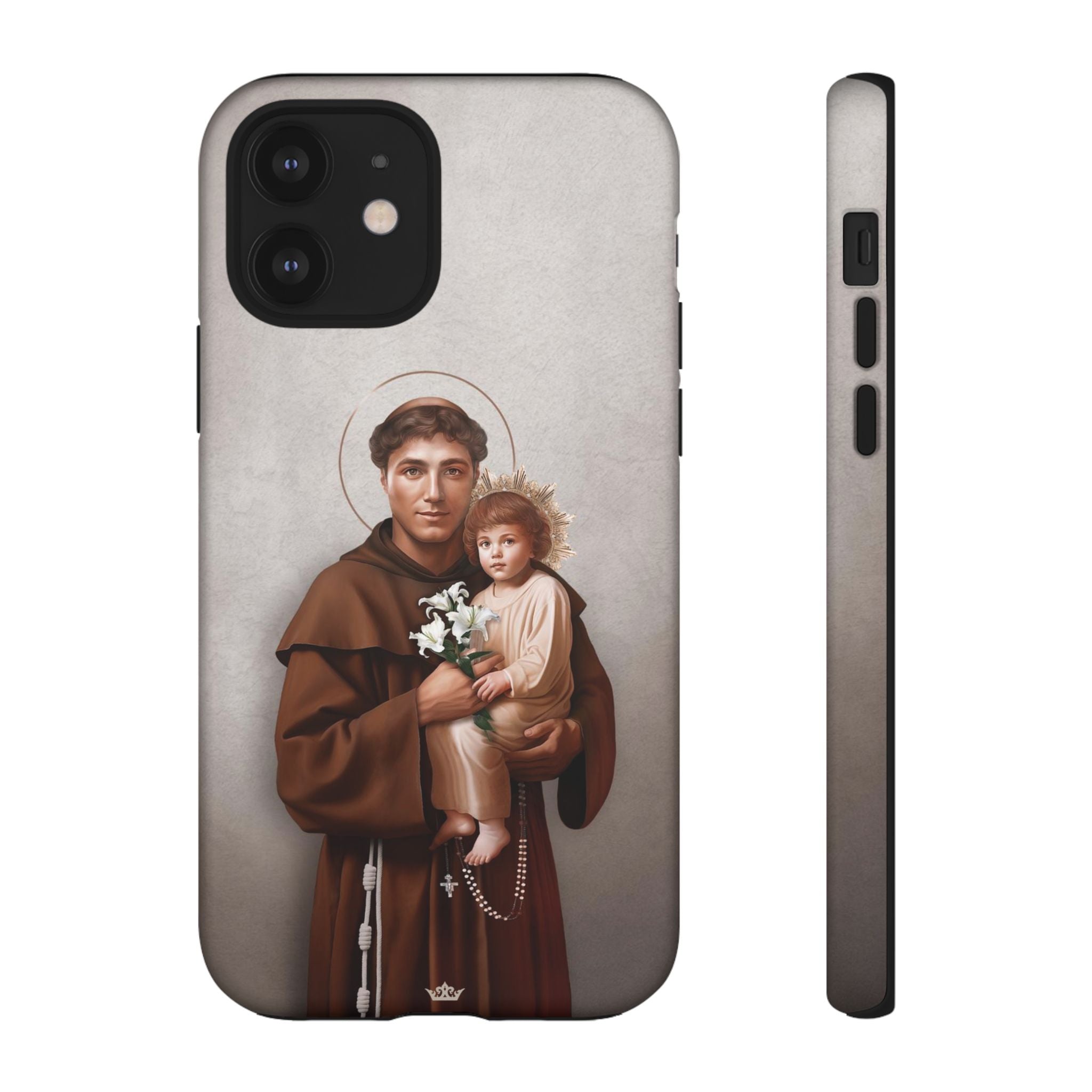


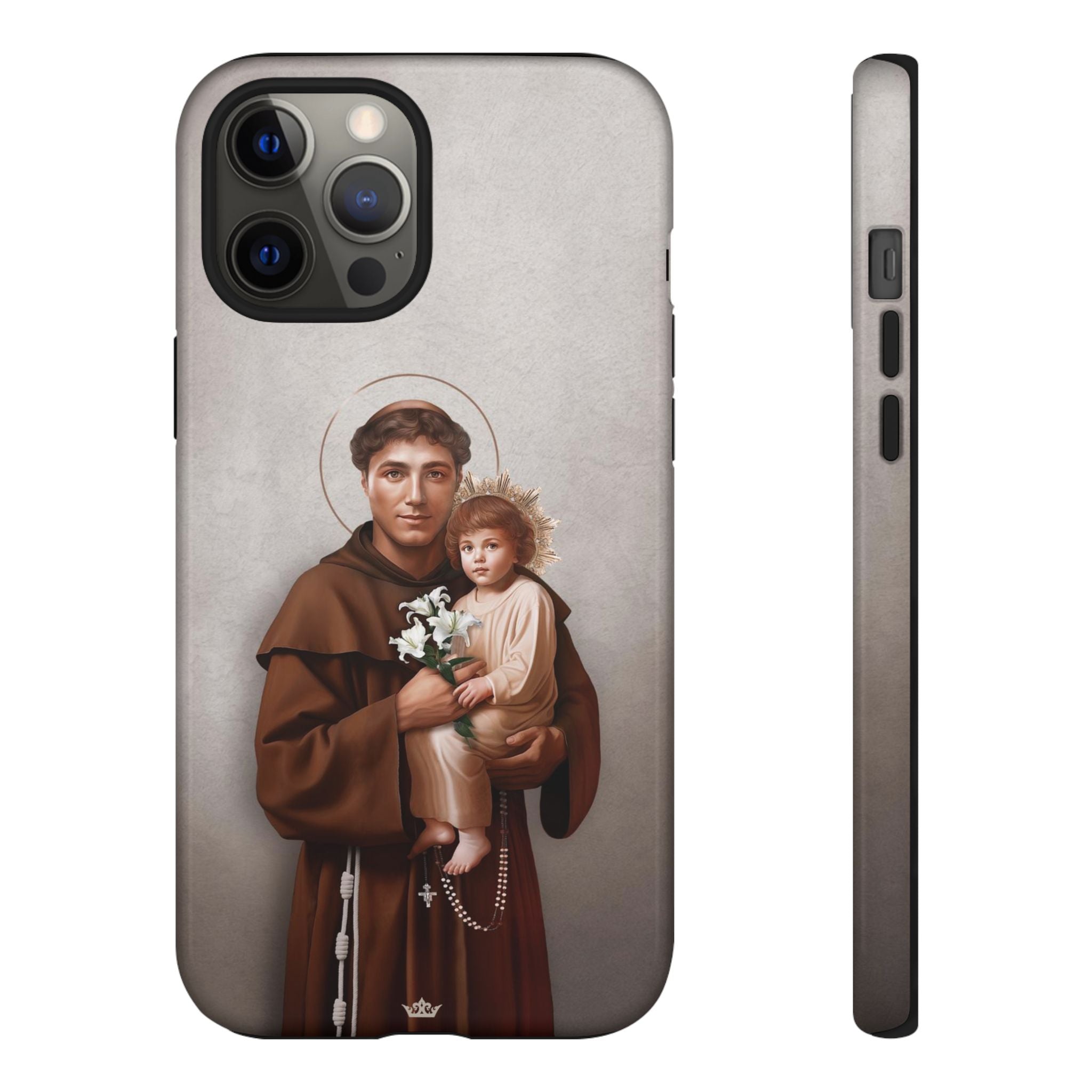
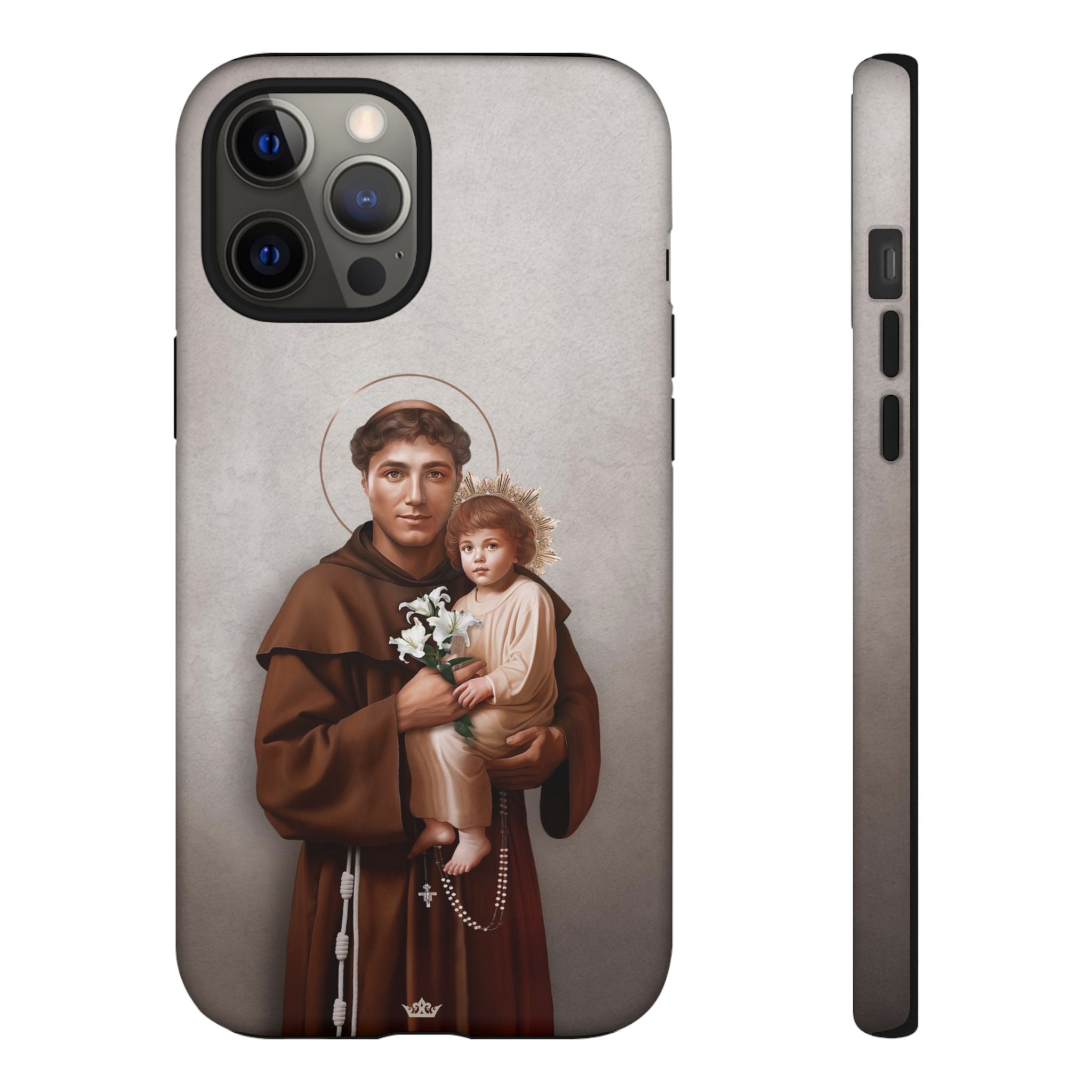
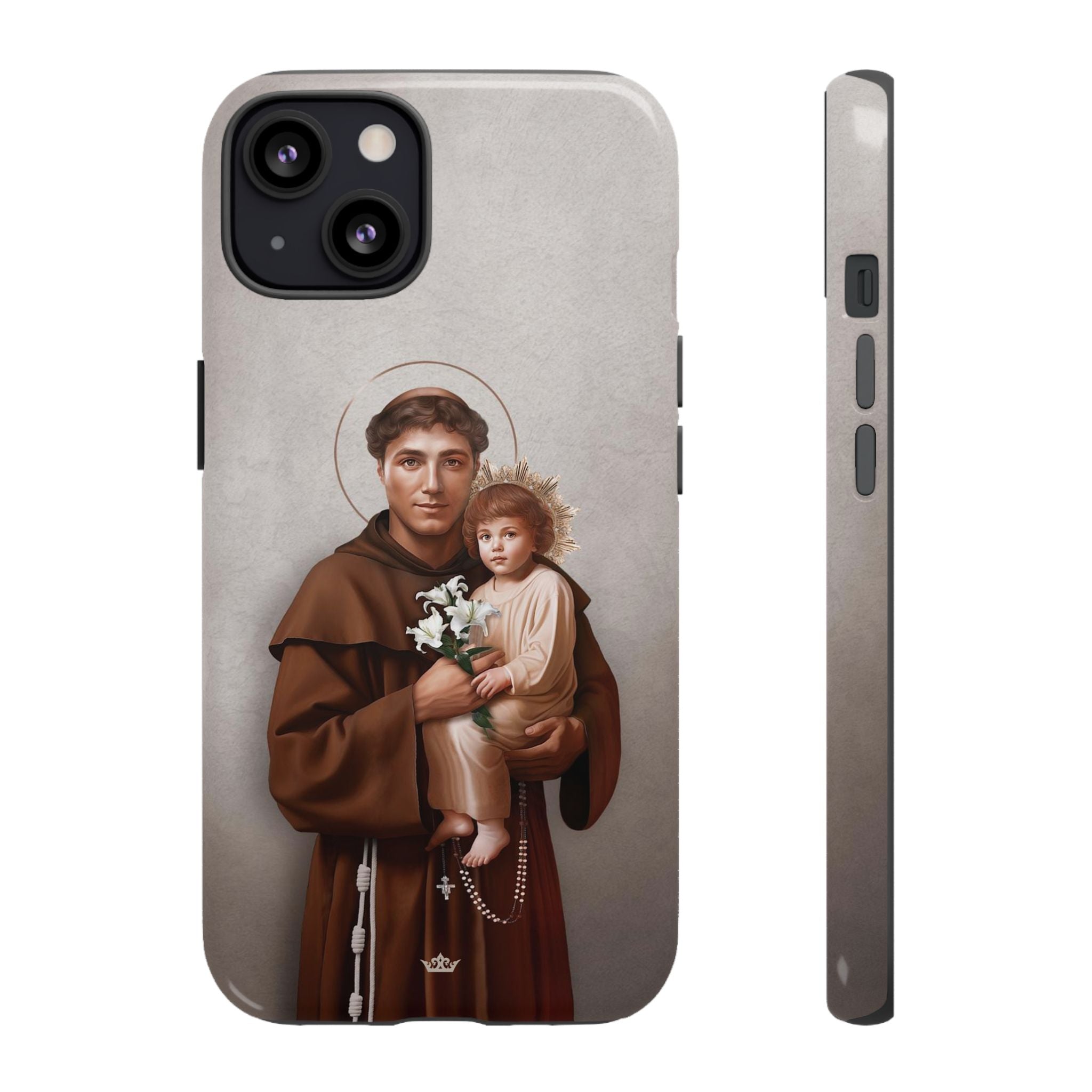
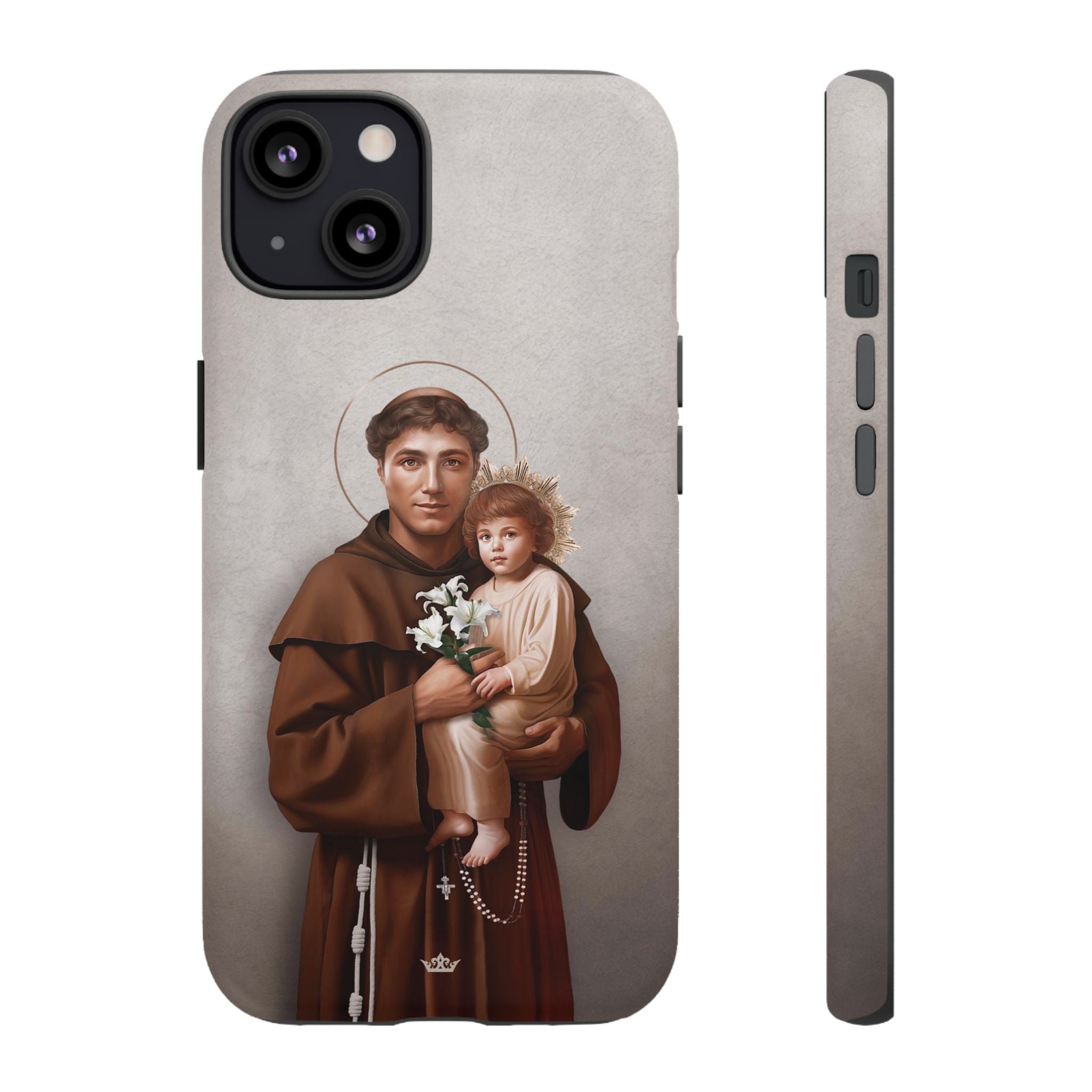


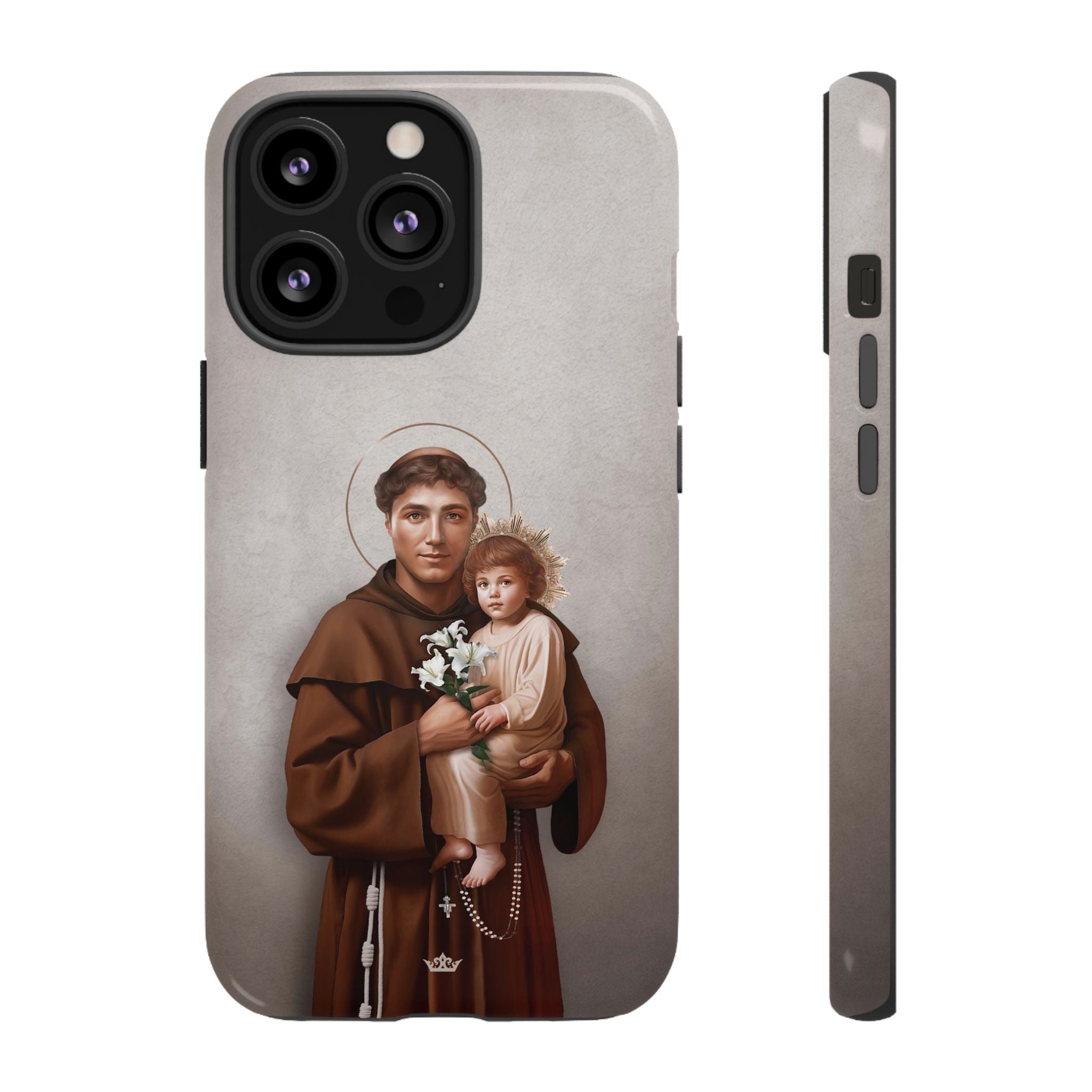
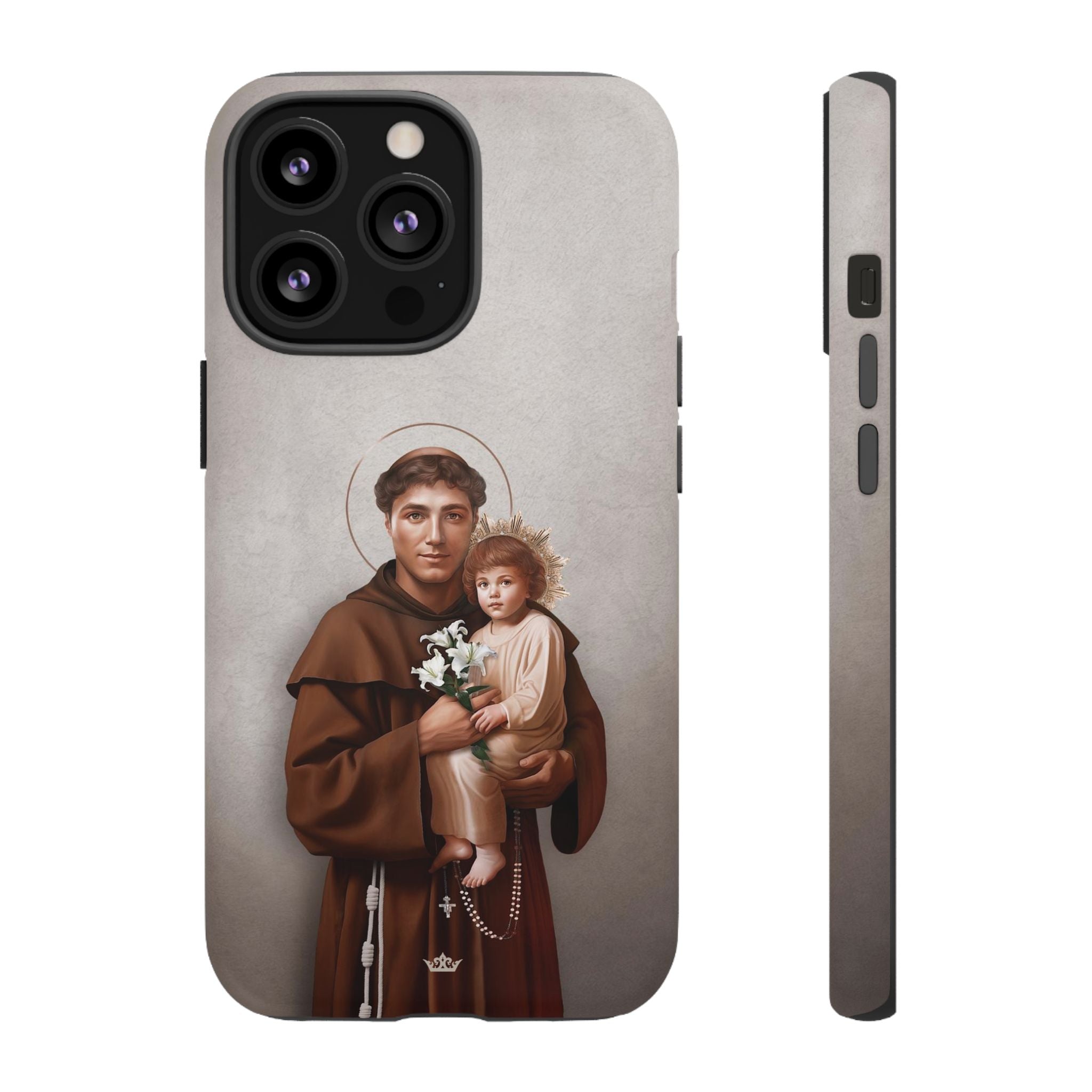
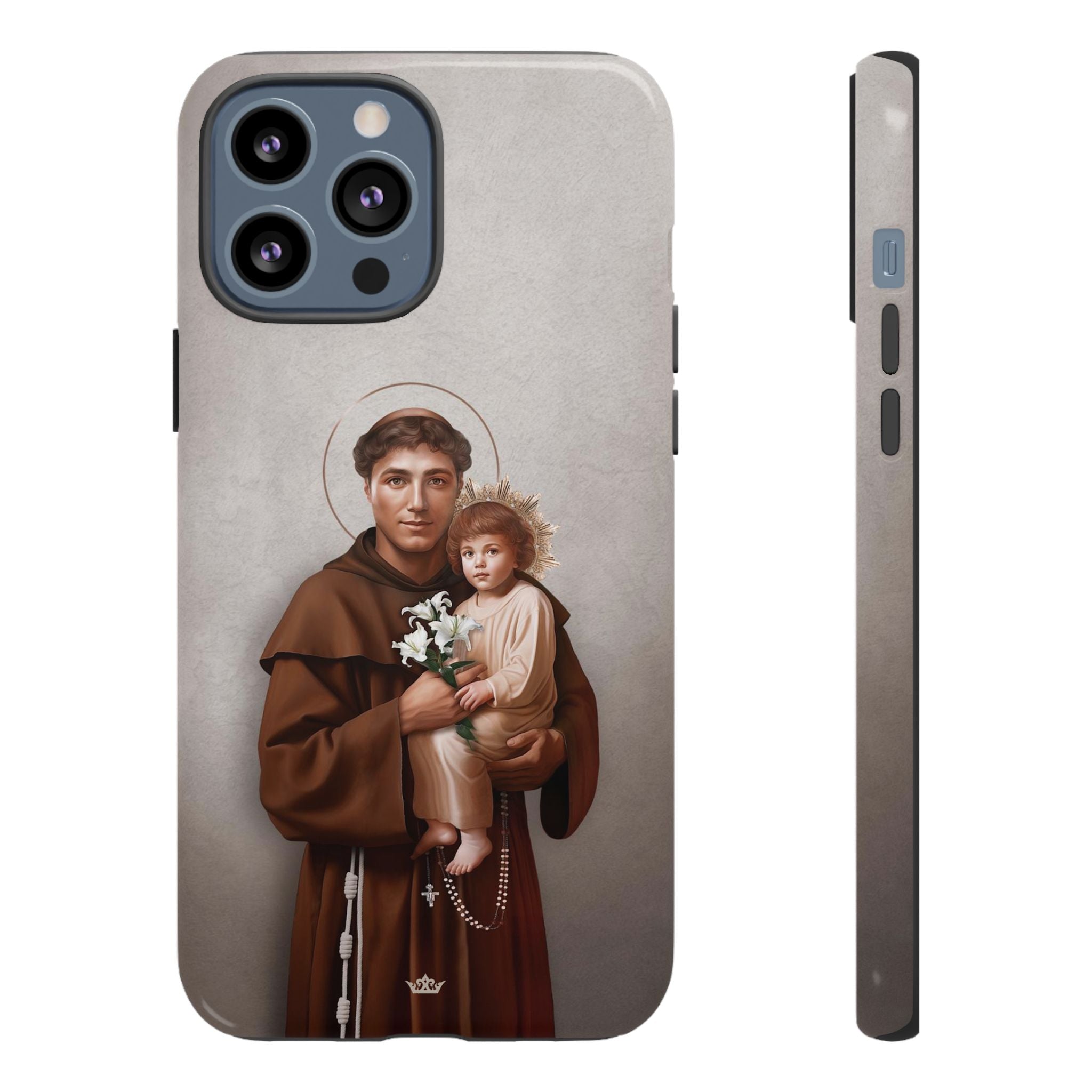





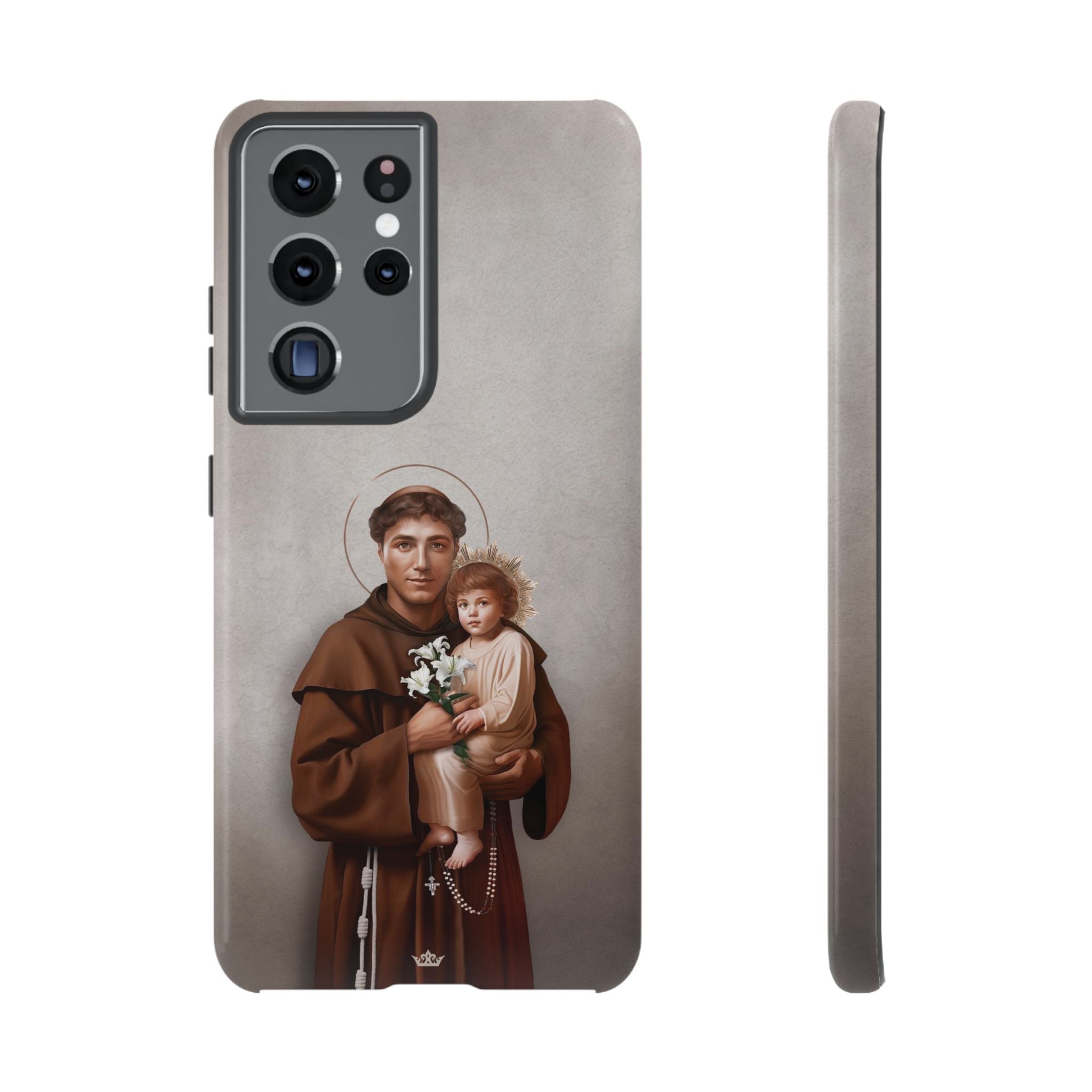
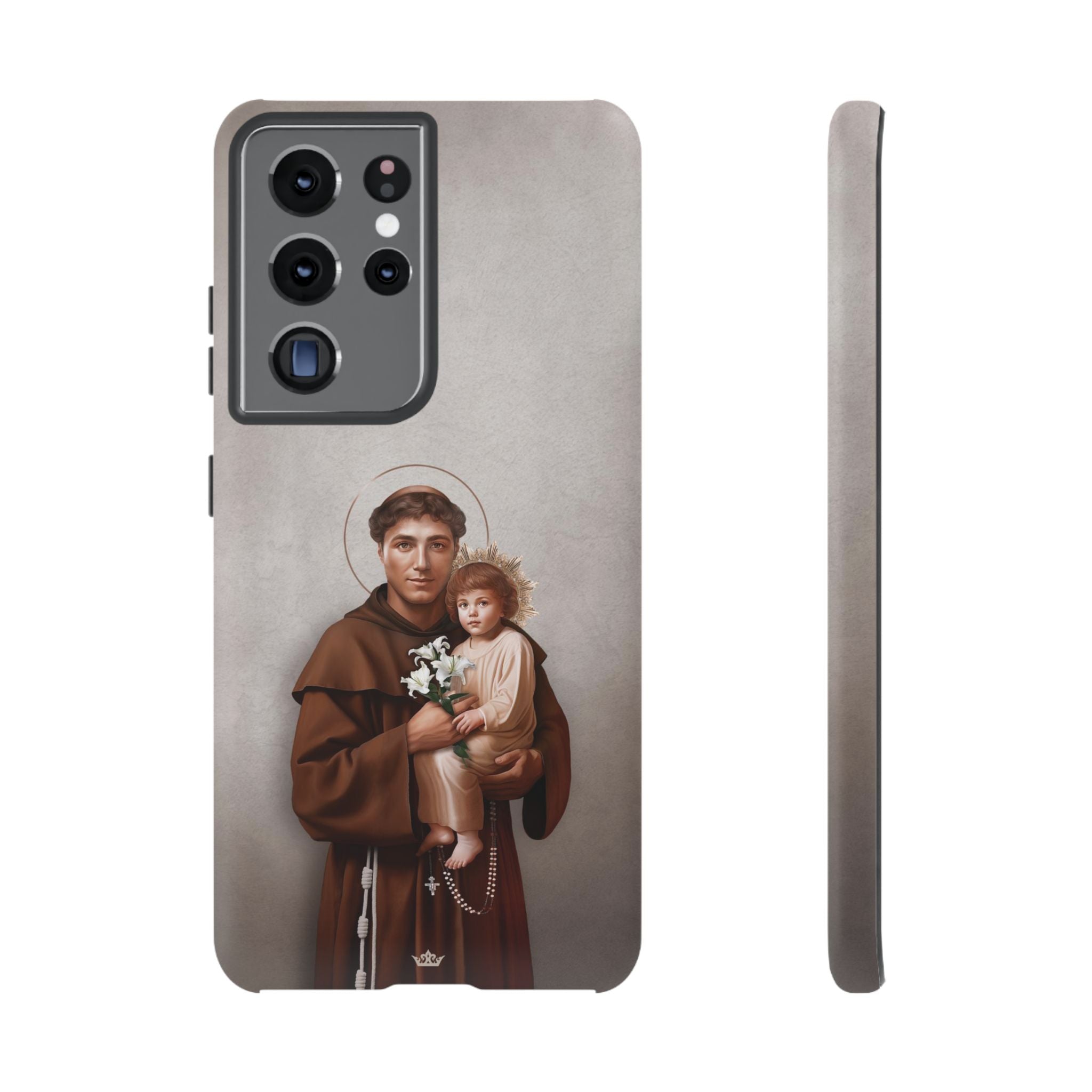


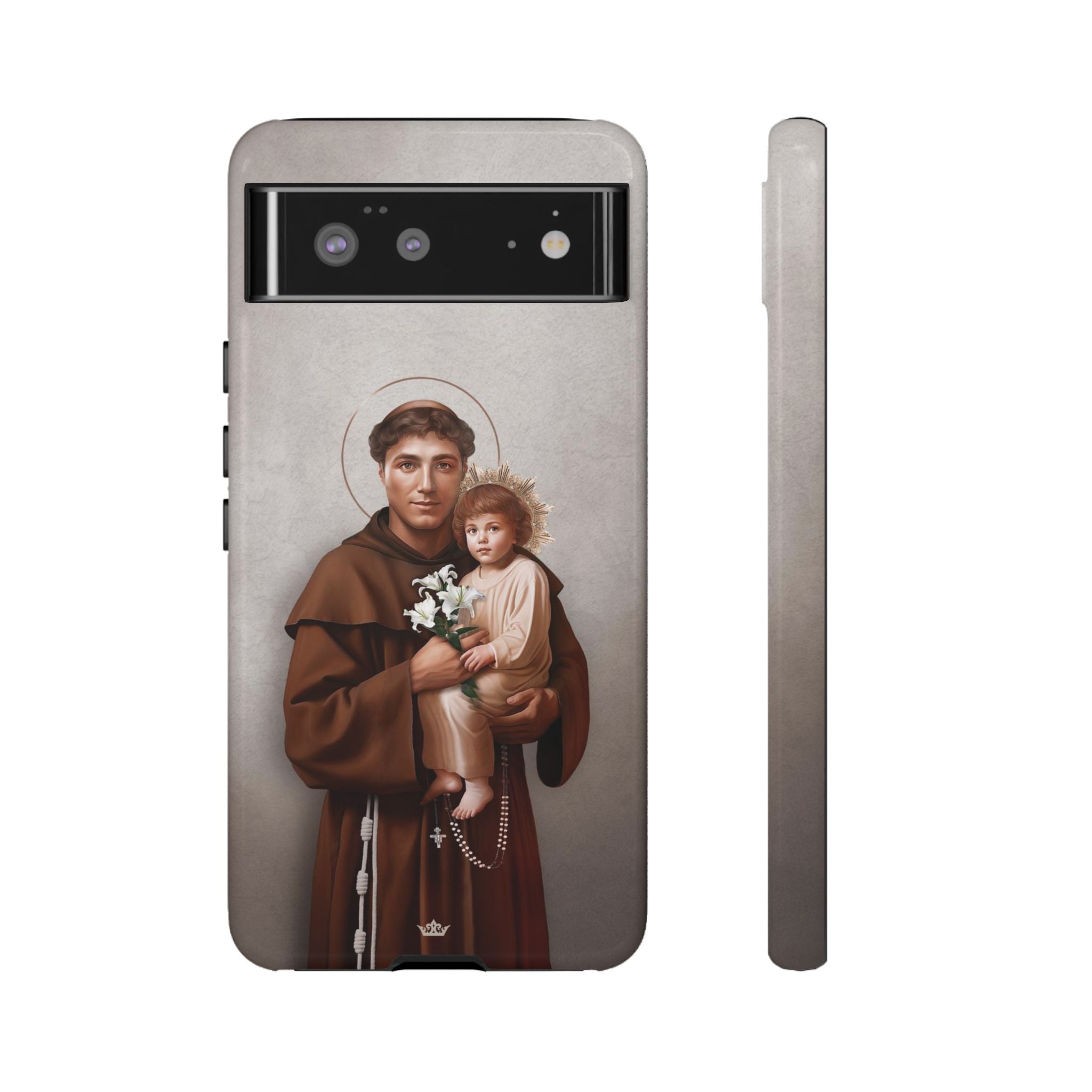
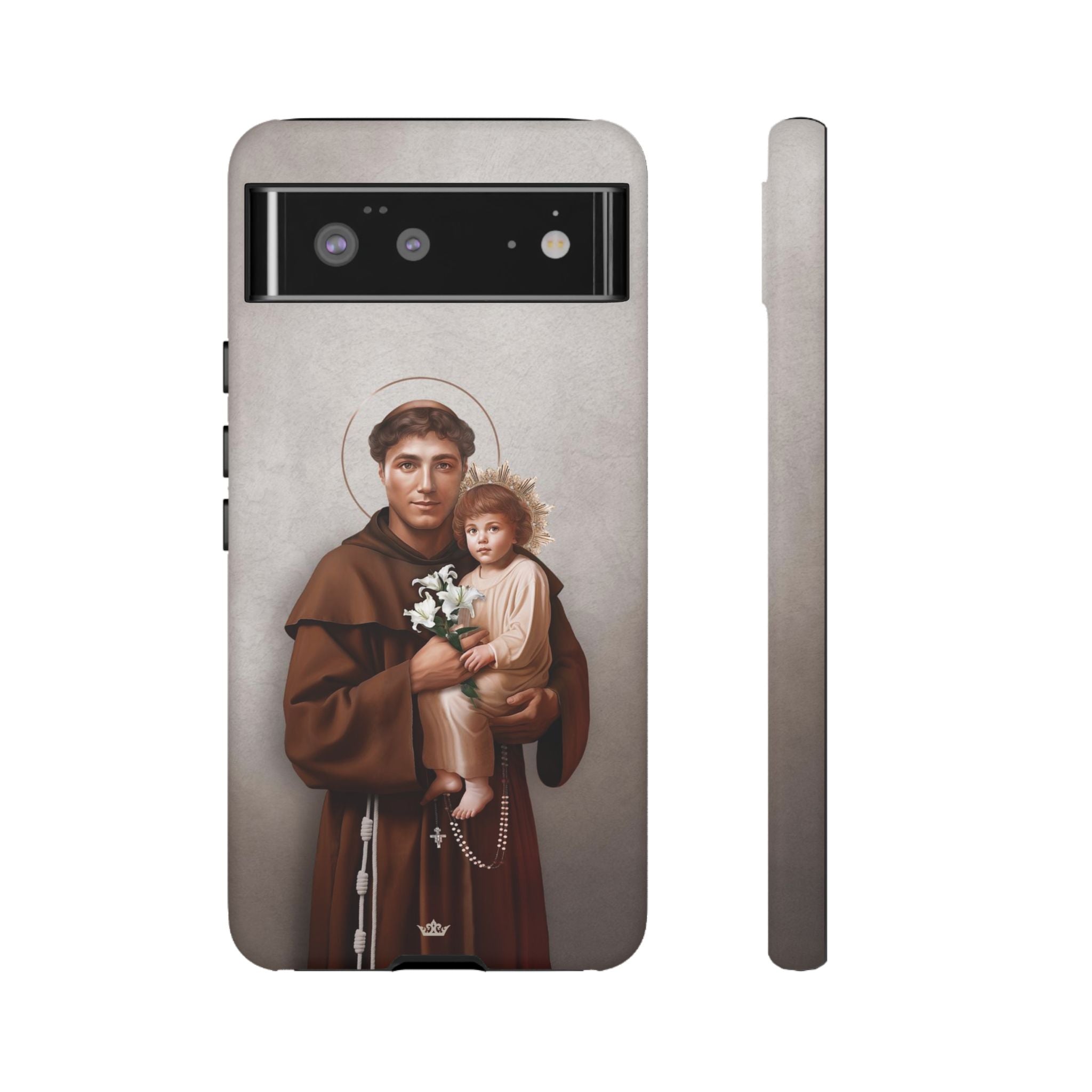














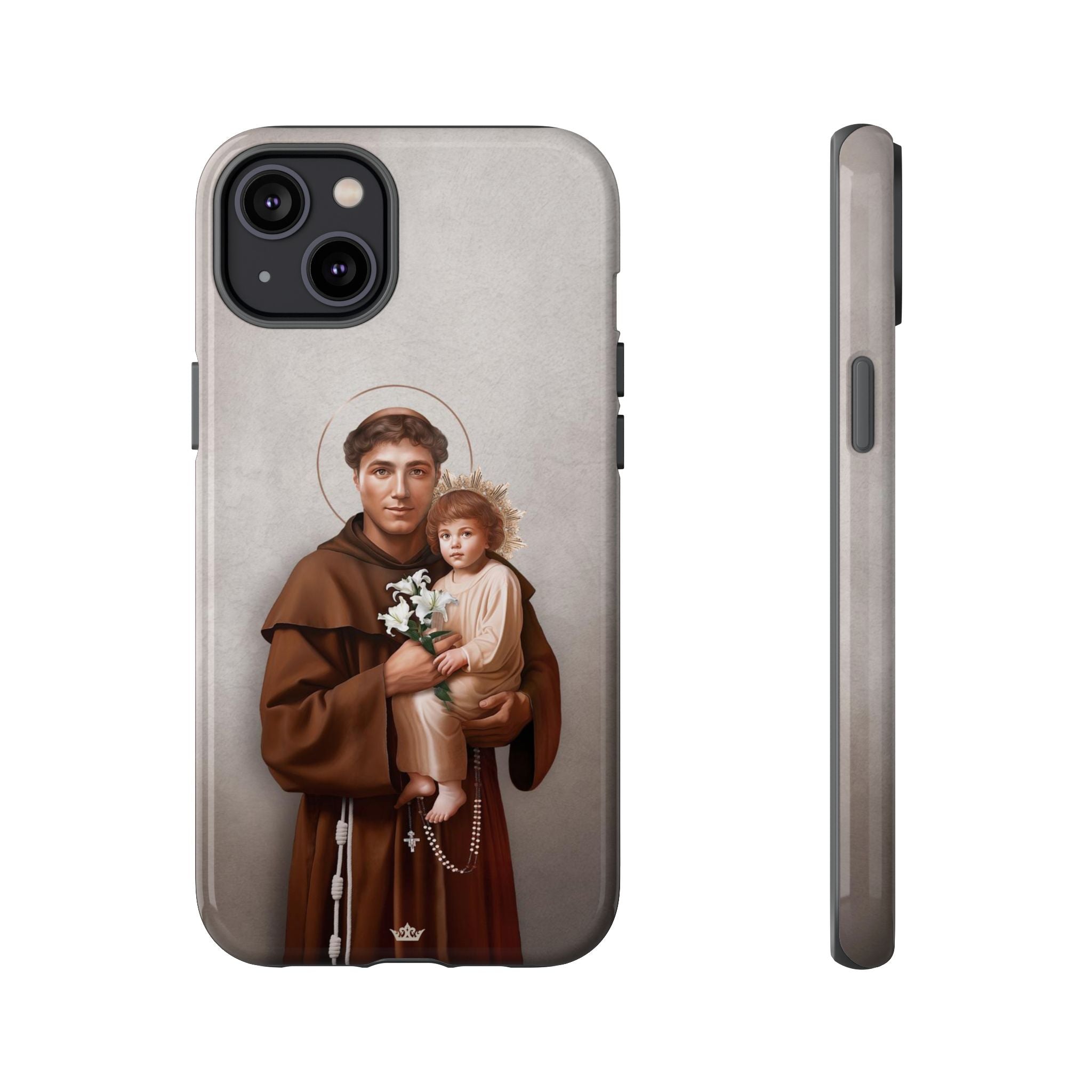
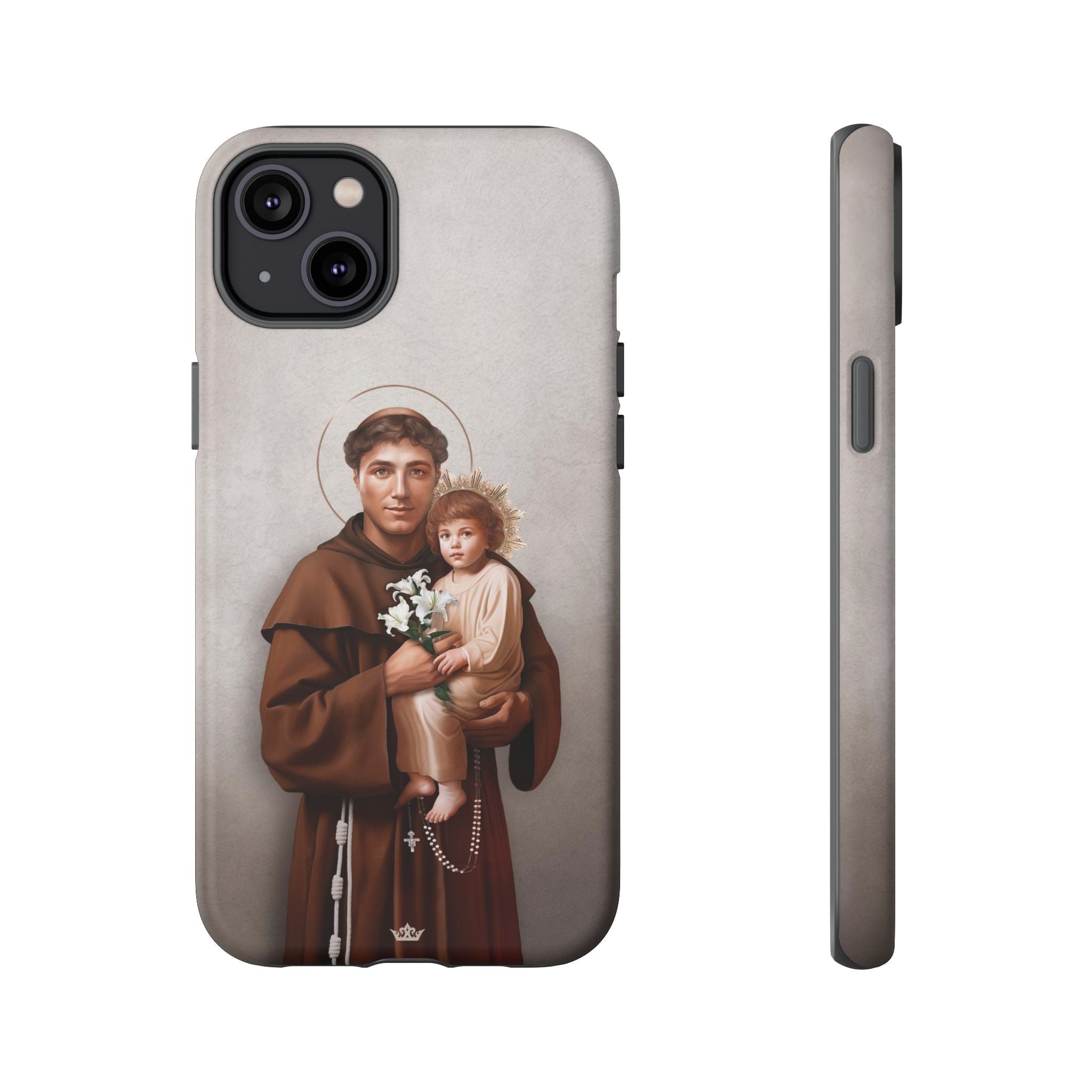






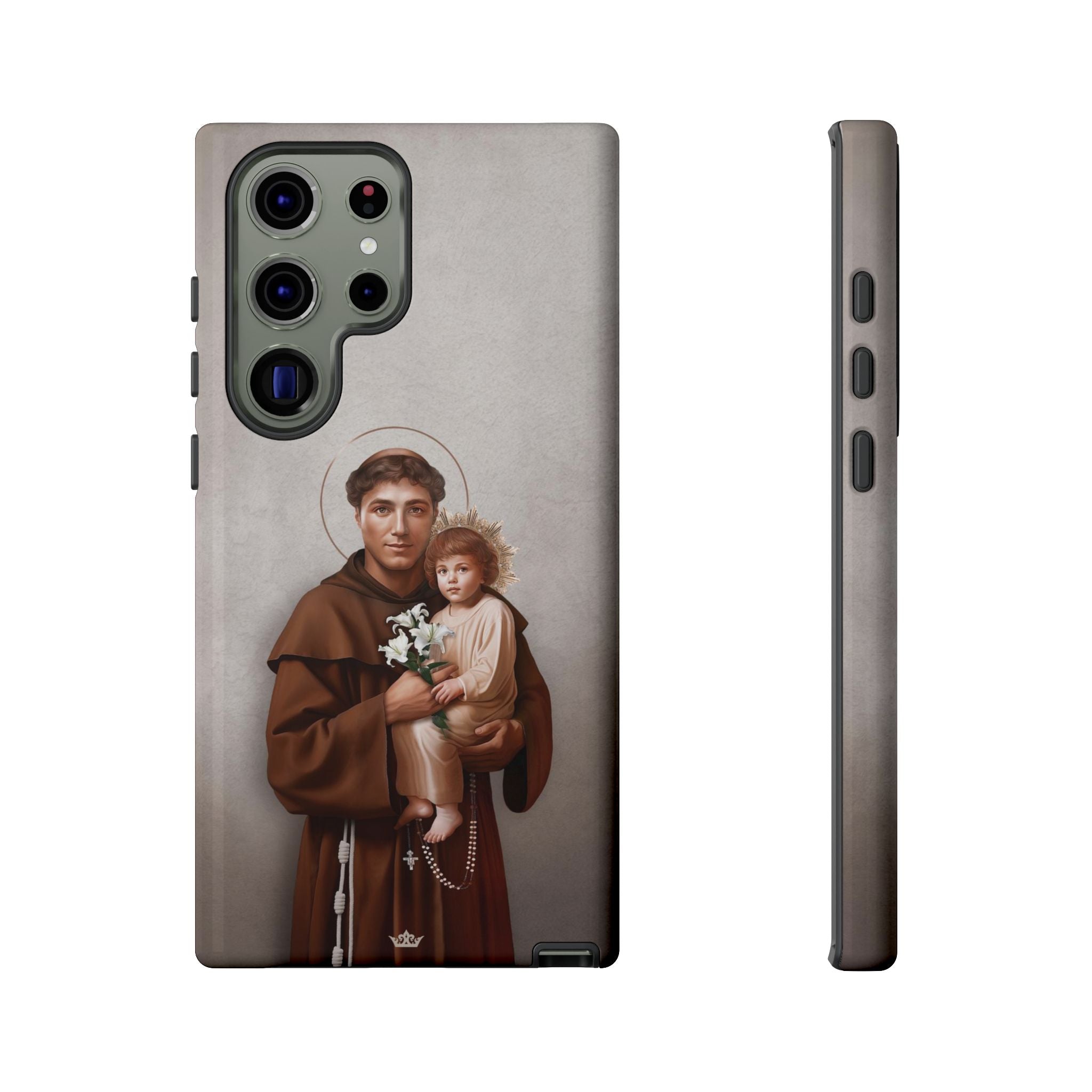
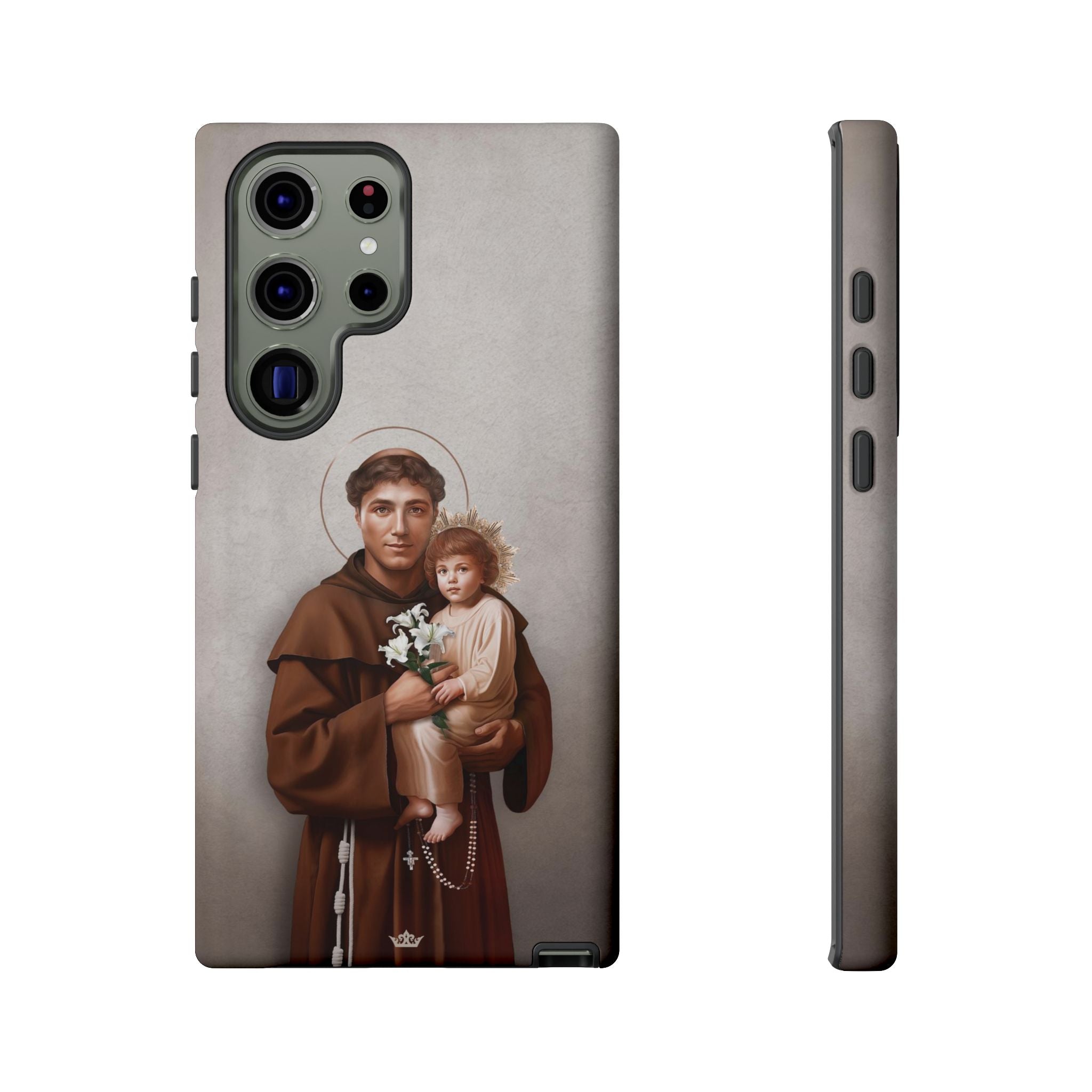
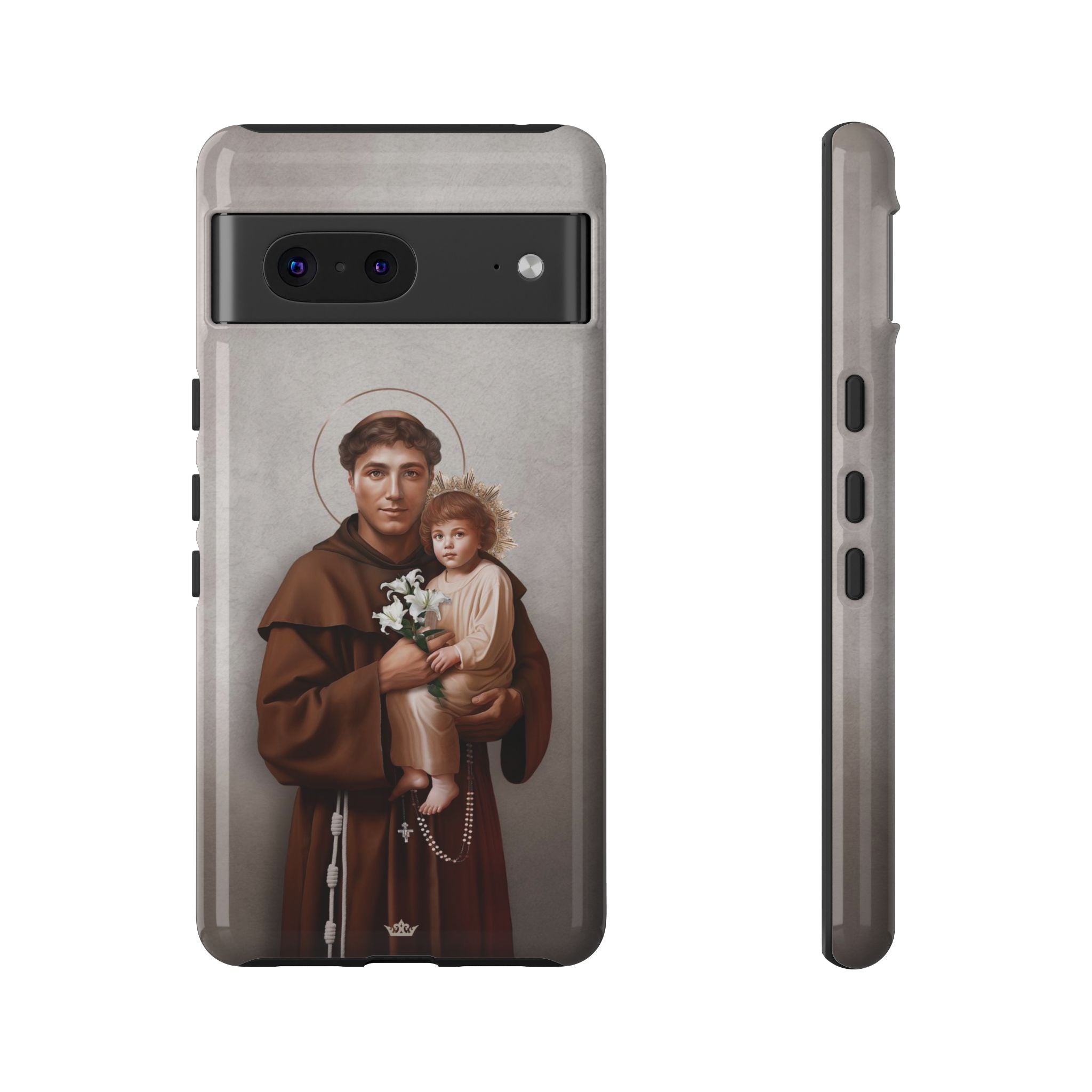
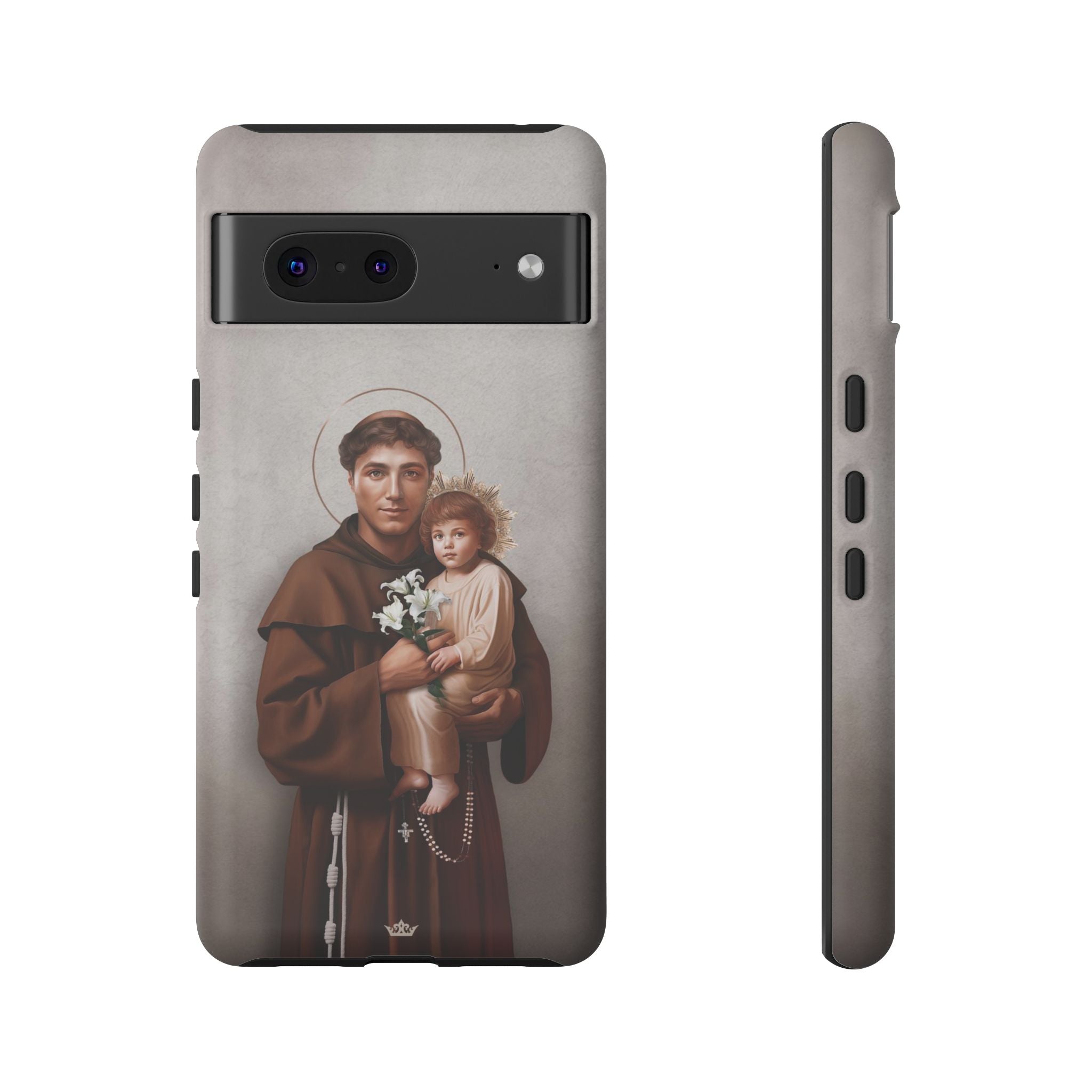
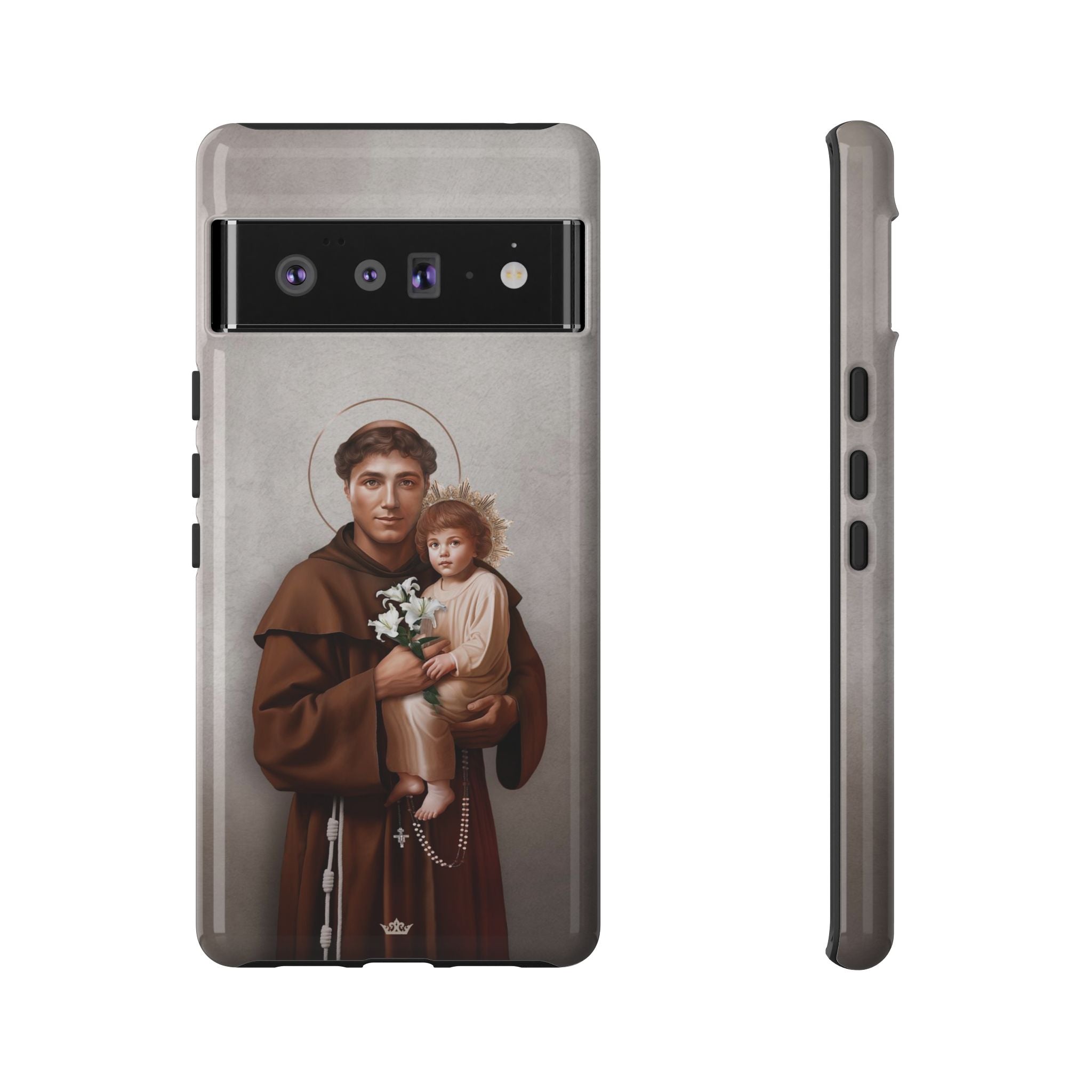
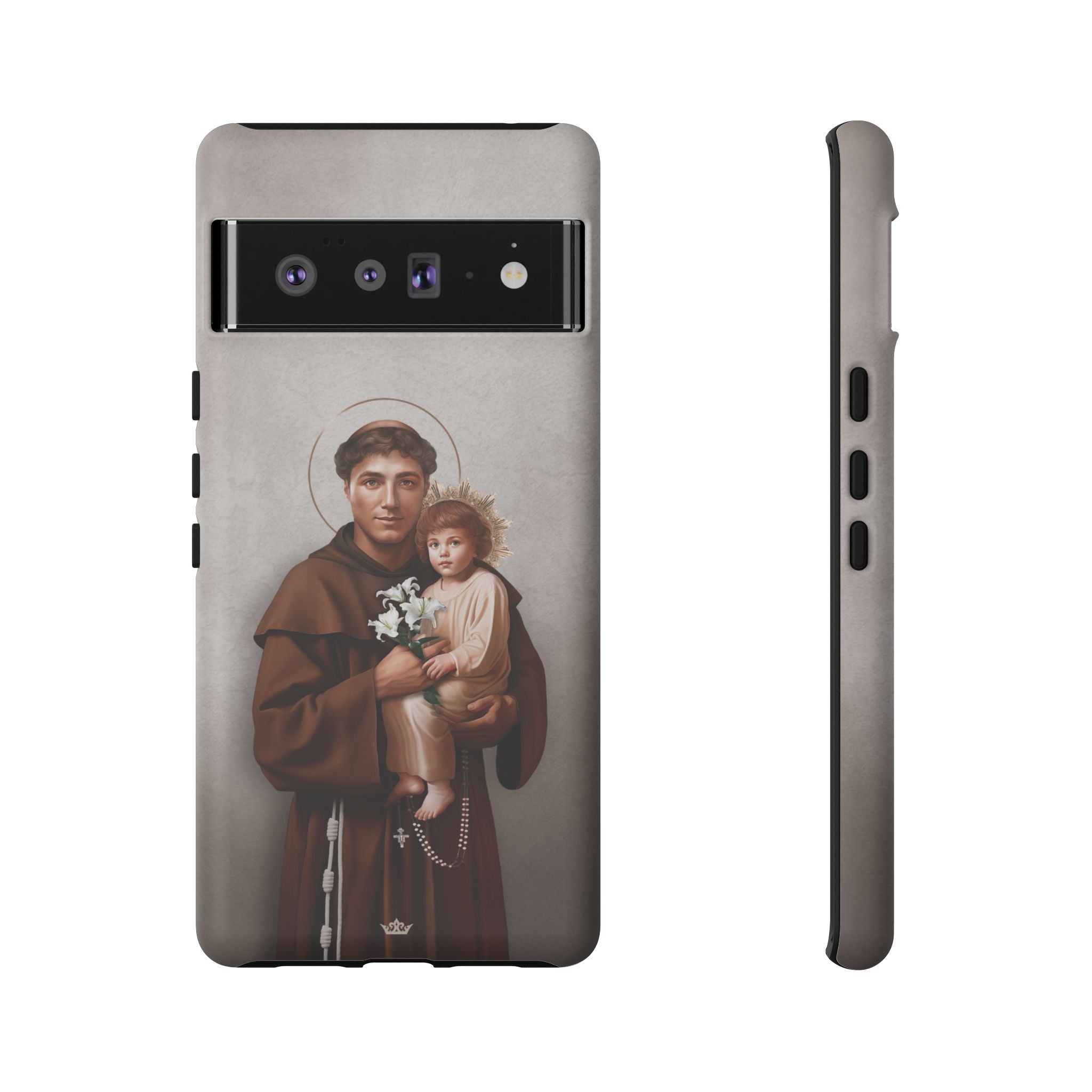

























St. Anthony of Padua Hard Phone Case (Light)
The St. Anthony of Padua Hard Phone Case is a premium quality and durable impact resistant hard polycarbonate phone case with an inner thermoplastic polyurethane liner to protect your phone from bumps and drops while maintaining a slim, sleek profile. A beautiful accessory to carry and share your faith or a truly unique gift.
■ Exterior finishes: Glossy or Soft Touch Matte
■ Available for iPhone | Samsung | Google

This is a couture item which is custom made-on-demand. Our couture collections feature exclusive, custom designs with our signature crown somewhere within the design. Not sold in stores and you won’t find this anywhere else. EXCLUSIVELY AT VENXARA.
Shipping + Delivery
These custom made-on-demand Hard Phone Cases ship world-wide directly from our case-makers in Wisconsin, USA. Destination tracking is available for most countries. A tracking number will be emailed to you once your order has shipped.
Production Time: 3-6 days
Ship Time: 3-12 days
Please Note: During peak shopping seasons, production and ship time may take a little longer than normal. If you are buying this item as a gift, please order as early as possible. We don't want to disappoint you or the gift recipient with a potentially delayed order.
For countries where tracking numbers are not available, this item should arrive by regular post within 2-4 weeks. Orders that have not arrived within 45 days of order processing are eligible for a free reshipment or a refund.
Glossy vs. Matte Finish
These Hard Phone Cases are available in a Glossy or Matte exterior finish. Understanding the differences will hopefully help you in deciding which option to choose.
The Matte Finish is smooth, has very little glare and does not show fingerprints and smudges. It has a luxe look to it but it can be a little slick when carrying or holding.
The Glossy Finish does show fingerprints and smudges and because it's glossy, it has a slight glare. But the gloss finish makes it easier to grip and less likely to slip out of your hand when carrying or holding.
Both are equally durable with a superior print quality. Incredible cases regardless of which finish you choose.
About St. Anthony

ST. ANTHONY OF PADUA
1195 — 1231
Feast Day June 13
Patron Saint of lost items, lost people, lost souls, seekers of lost articles, animals, elderly people, faith in the Blessed Sacrament, fishermen, oppressed and poor people and travelers.
Fernando Martins de Bulhoes was born in Lisbon, Portugal on August 15, 1195. Upon his admission to the life of the Franciscan order, he joined the small hermitage in Olivais, and adopted the name Anthony from the name of the chapel located there, dedicated to Saint Anthony the Great.
The call to leave everything and follow Christ was the rule of Anthony’s life. Over and over again, God called him to something new in His plan. And every time, Anthony responded with a renewed zeal to serve his Lord Jesus more completely.
His journey as the servant of God began as a very young man when he decided to join the Augustinians in Lisbon, giving up a future of wealth and power to serve the Lord. When the bodies of the first Franciscan martyrs went through the Portuguese city where he was stationed, he was filled with an intense longing to be one of those closest to Jesus himself: those who die for the Faith. So Anthony entered the Franciscan order and set out to preach to the Moors. But an illness prevented him from achieving that goal. He went to Italy and was stationed in a small hermitage where he spent most of his time praying, reading the Scriptures and doing menial tasks.
Anthony went to preach the Gospel of the Catholic Church in Rimini, where the heretics treated him with great contempt. So, instead he took himself to the shore-line and began to preach to the fish. This was not for the instruction of the fish, but rather for the glory of God, the delight of the angels, and the easing of his own heart. When a great crowd of fish arrayed themselves, the citizens flocked to see this marvel, and Anthony charged them with the fact that irrational creatures were more receptive than the unfaithful of Rimini, at which point the people gave ear to his sermons.
Recognized as a great man of prayer and a great Scripture and theology scholar, Anthony became the first friar to teach theology to the other friars. But, his way of teaching the Catholic Faith was so simple and resounding that the uneducated and the innocent could understand his messages. It is for this reason he was declared a Doctor of the Church by Pope Pius XII in 1946.
Anthony became sick with ergotism (a poisoning from fungi) in 1231, and went to the woodland retreat at Camposampiero, Italy with two other friars for a respite. There, he lived in a cell built for him under the branches of a walnut tree. Anthony died on the way back to Padua on June 13, 1231 at the Poor Clare monastery at age 35.
Anthony is buried in a chapel within the large basilica built to honor him. When his body was exhumed 30 years after his death, it was found turned to dust, but his tongue was claimed to have glistened and looked as if it were still alive and moist; apparently a sign of his gift of preaching. Anthony was canonized by Pope Gregory IX in 1232 less than one year after his death.
Choose options




































































































